You could be forgiven for thinking that punting along the river Cam is just about seeing the Cambridge colleges and hearing stories about student antics. However, to do that would be to ignore the 9 (yes nine!) Cambridge bridges that cross the river, dotted along the Backs.
Admittedly, some of these bridges are more famous, more interesting, or just prettier than the others. We’re going to tell you about all of them, from one end of the river to the other (ok, not the whole of the river Cam, just the middle river, which is the bit that we punt along). *Warning – may contain spoilers* – you’ll almost certainly hear some of this information if you come on one of our Cambridge punt tours when you visit Cambridge, so look away now if you don’t want to know.
Still here? Ok, settle in, this could be a long ride… (don’t worry though, there are lots of pictures).
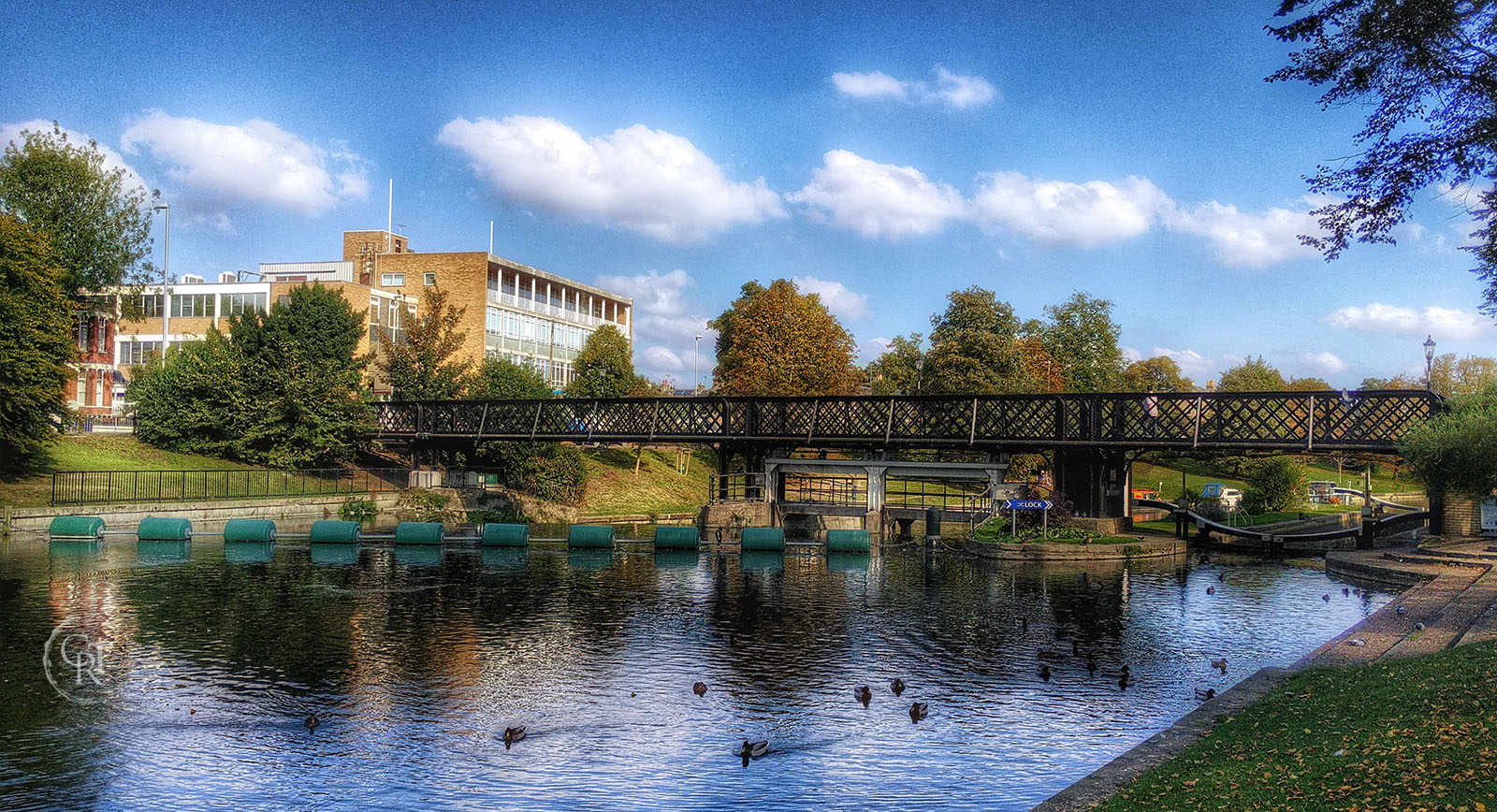
Honourable mention for Jesus Green footbridge and lock – the end of the middle river
Magdalene Bridge
First up we have Magdalene (pronounced maudlin) bridge. This road bridge is at one end (the start as far as we are concerned) of the Backs, on Magdalene street and next to the college of the same name. Not the most exciting bridge to look at:
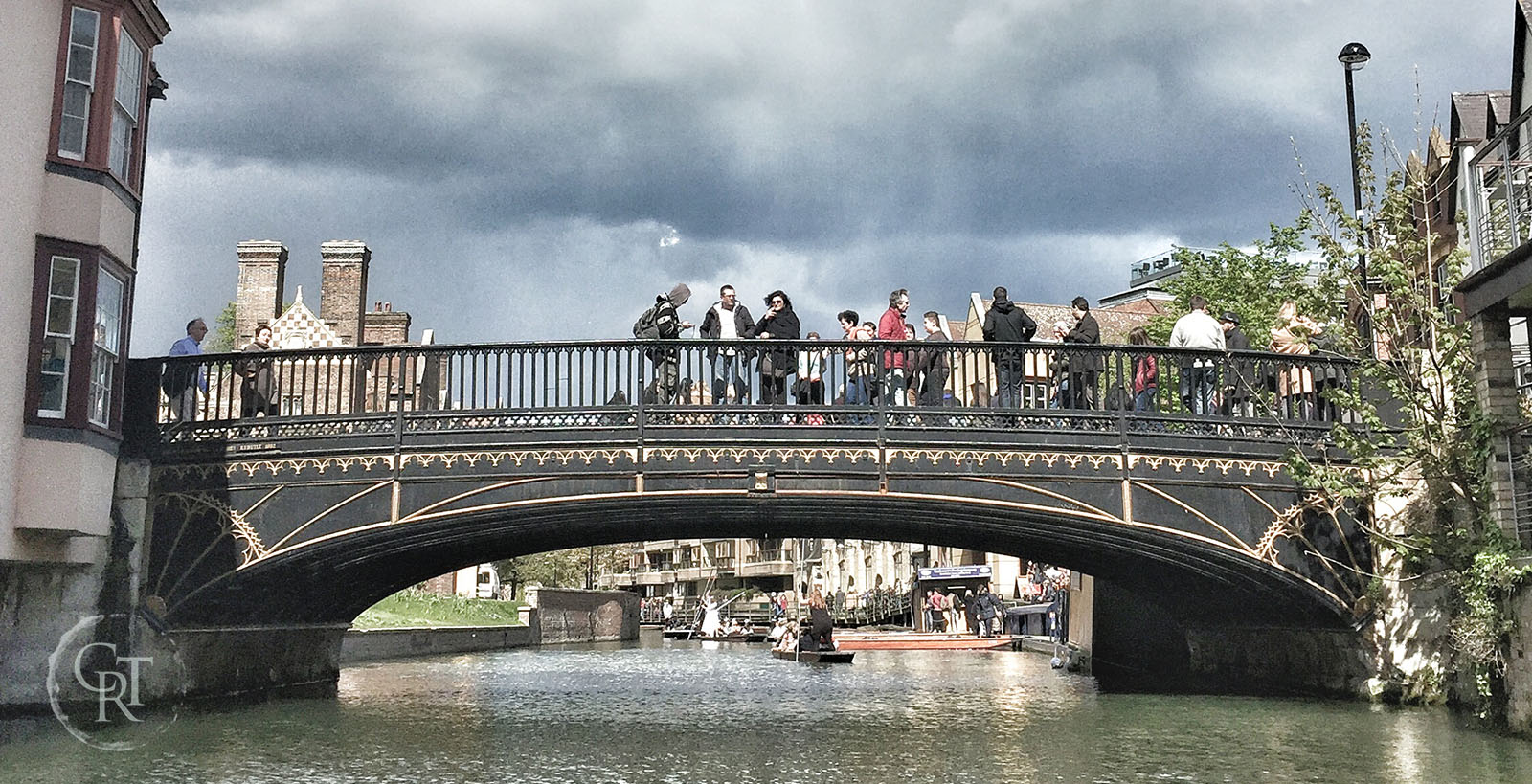
Not so great any more?
However, it is notable for:
- being on the site of (or very close to) the original crossing point over the river Cam
- on the Roman road that linked London (to the south) with the north and was part of an important trade route.
- The current, cast iron construction was built in 1892, designed by Arthur Browne, then rebuilt in 1982
- Grade II listed building
- Having handy ridges underneath so you can pull yourself through whilst punting
- At one time in its history was the site of a ducking stool
- Oh yeah… nearly forgot. The crossing point here was so important that the bridge (the Cam-bridge) gave the city its name but that’s a story in itself
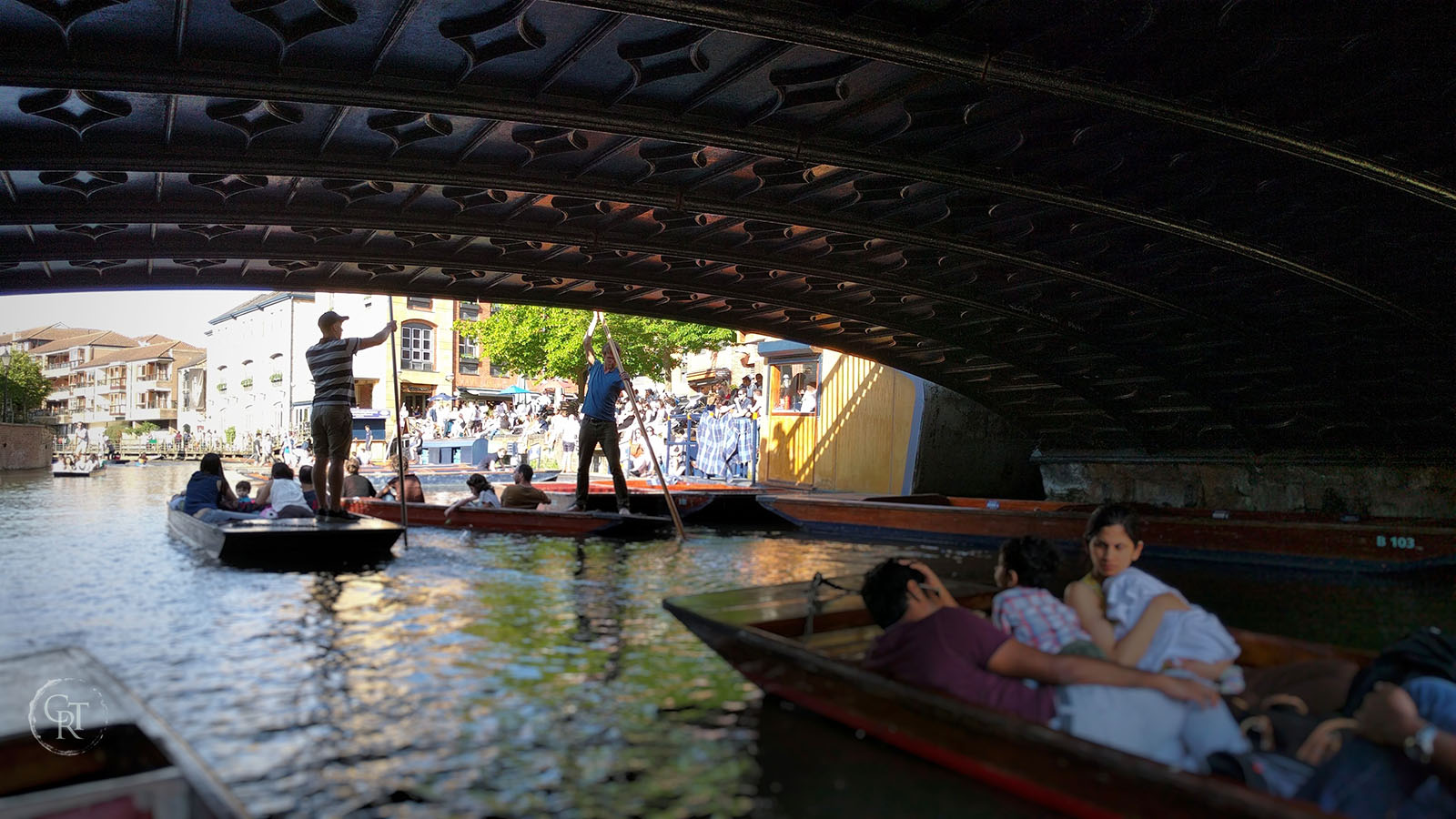
Punting underneath Magdalene bridge
For many years, the various incarnations of bridge here were known as the ‘Great bridge’ because of their strategic and economic importance to the city.
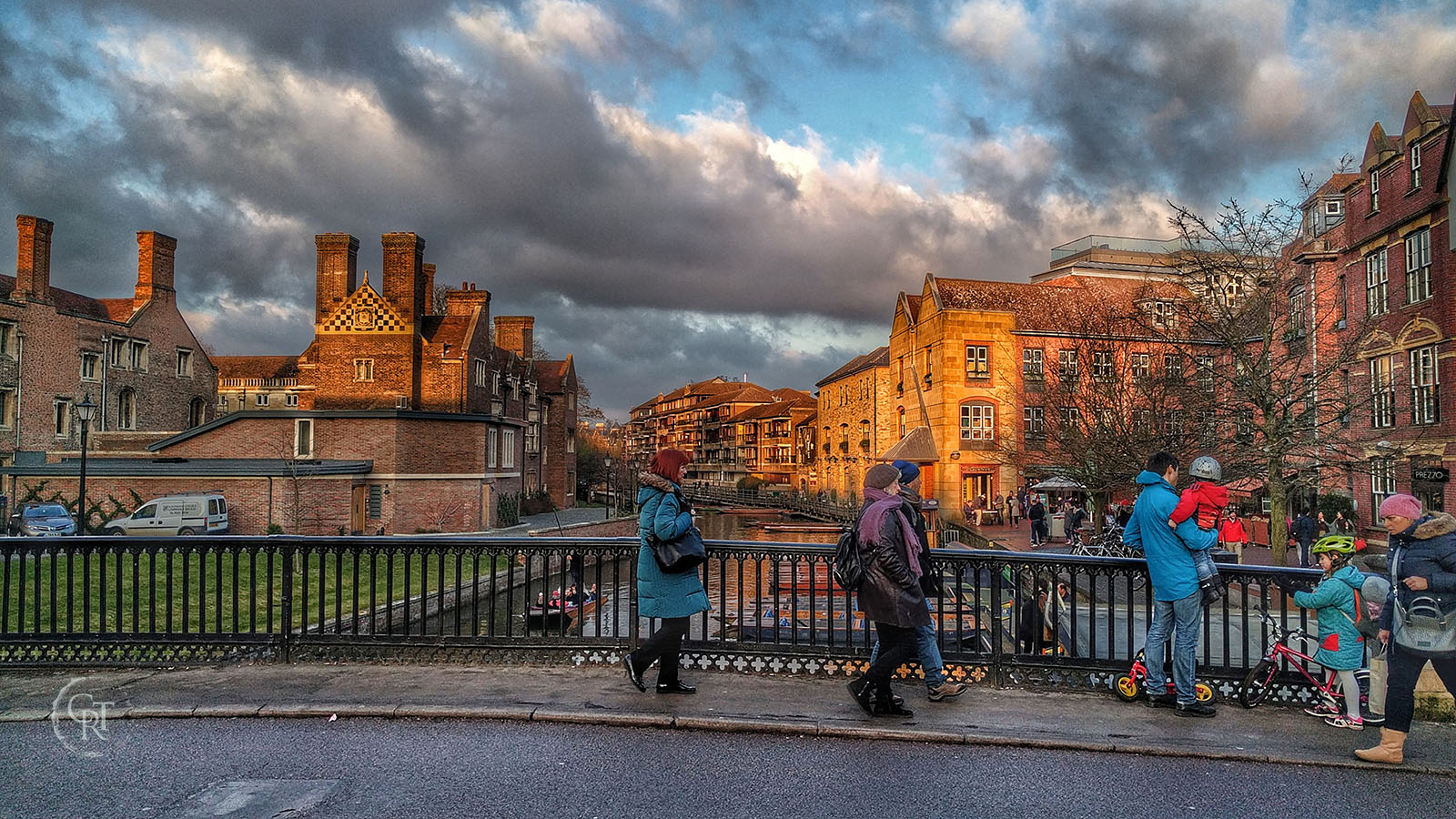
A winter afternoon view of Quayside from Magdalene bridge
Bridge of Sighs
No saving the best until last here… one of the most famous bridges in Cambridge, the Bridge of Sighs is up next.
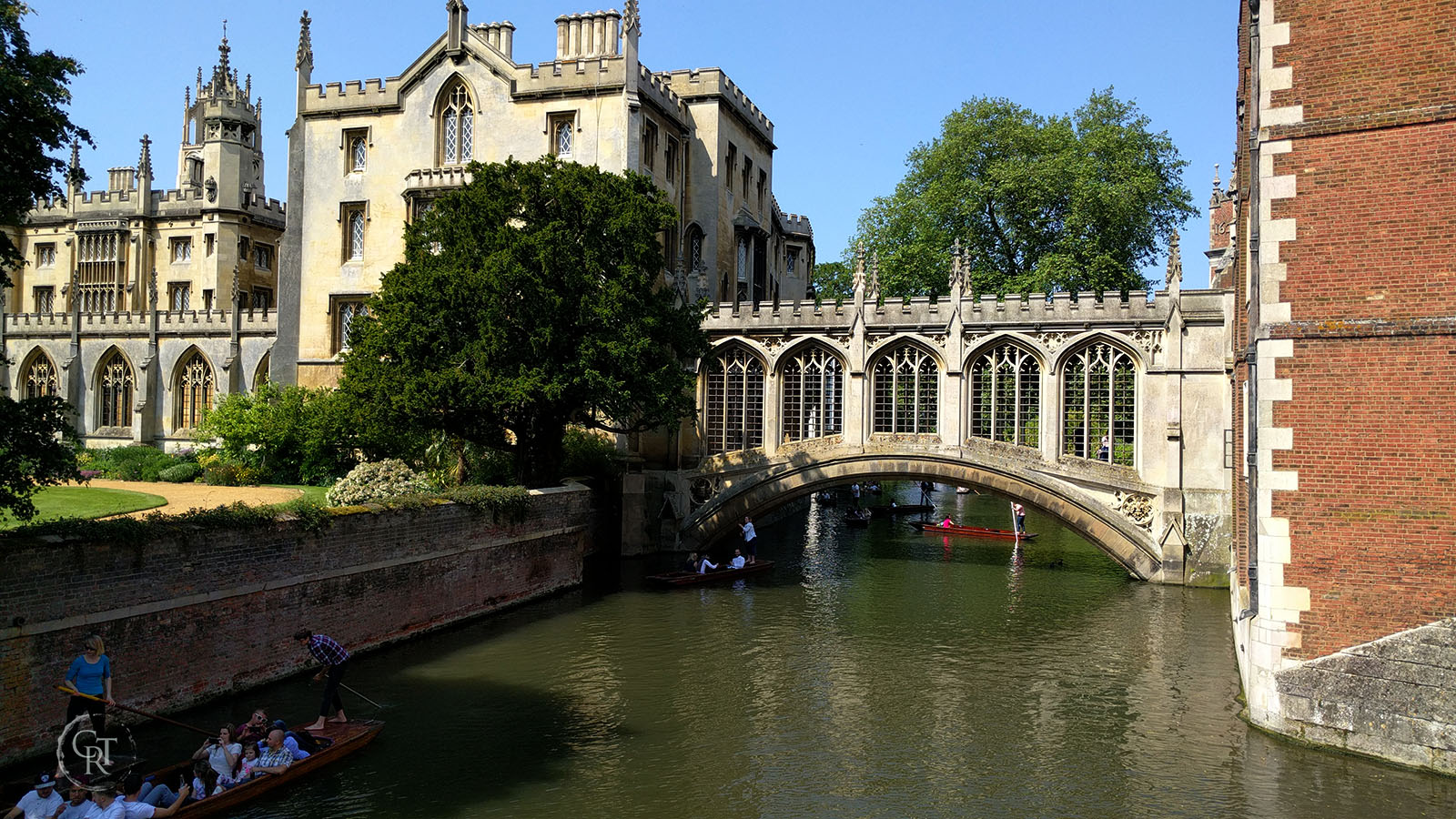
Bridge of Sighs in the sunshine
Arguably the most famous bridge in Cambridge (it’s certainly in the top two), this is the only covered bridge and one of two foot bridges at St John’s College. You could argue that their other bridge is a road bridge but, let’s not.
Possibly originally known as the new bridge when it was built in 1831, to connect the college’s New Court building on the west side of the river with the old court buildings (third court) on the east. This is a great spot for a photo opportunity while you’re staying in Cambridge.
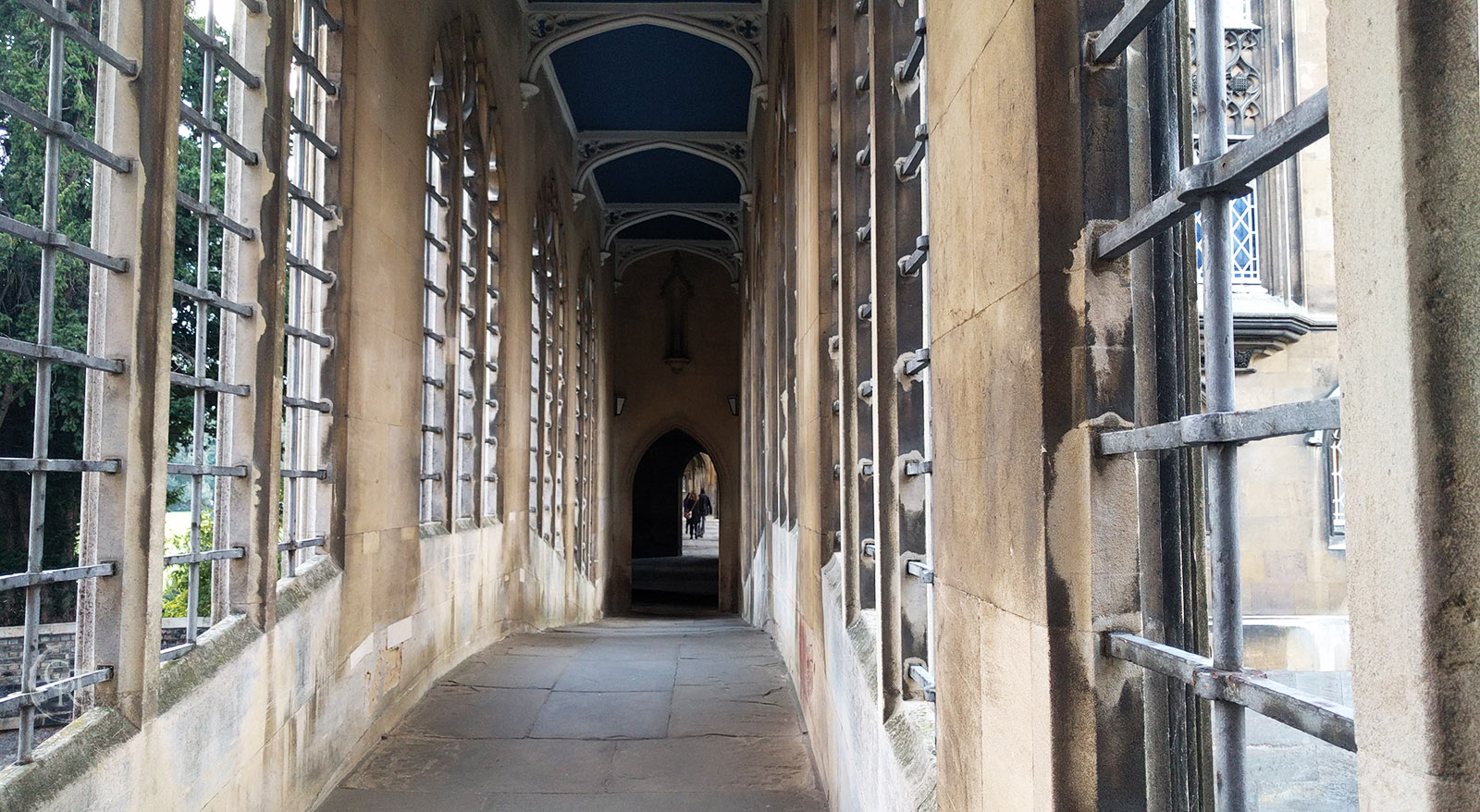
Inside the Bridge of Sighs
- Grade I listed
- Covered bridge
- Stone construction, built in 1831, designed by Henry Hutchinson
- One of two bridges at St John’s college
- Only decorated with carvings and royal crests on the side that faces Kitchen bridge
- Can only really be seen from within the college itself, or from the river Cam
- On at least one occasion has had a car suspended from it as part of a student prank
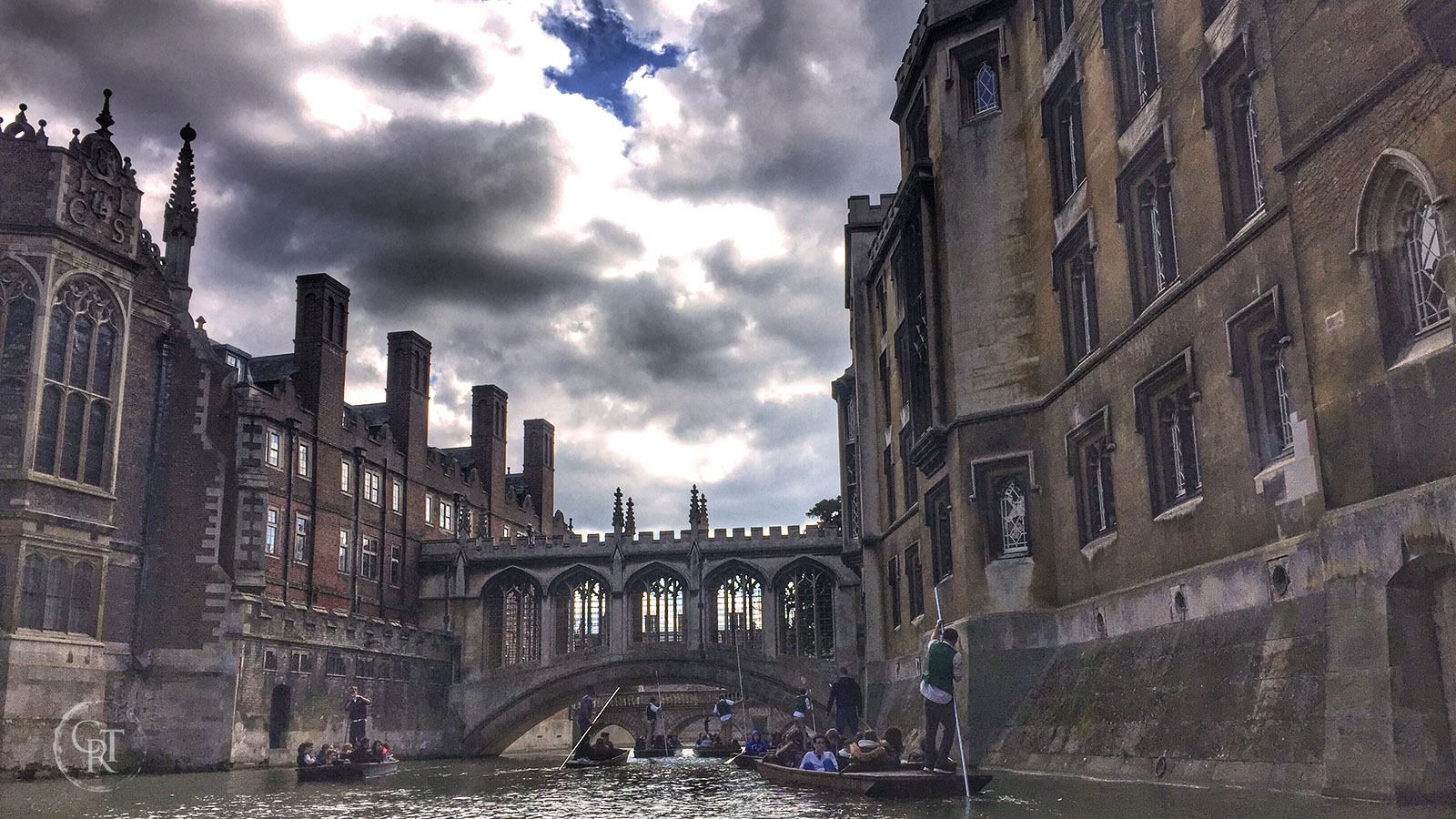
The ‘boring’ side of the Bridge of Sighs
Despite the name, the Cambridge version of the Bridge of Sighs looks not a lot like it’s Venetian namesake (and while we’re on the subject, punts are nothing like gondolas either…), or any of the other bridges that share the same moniker.
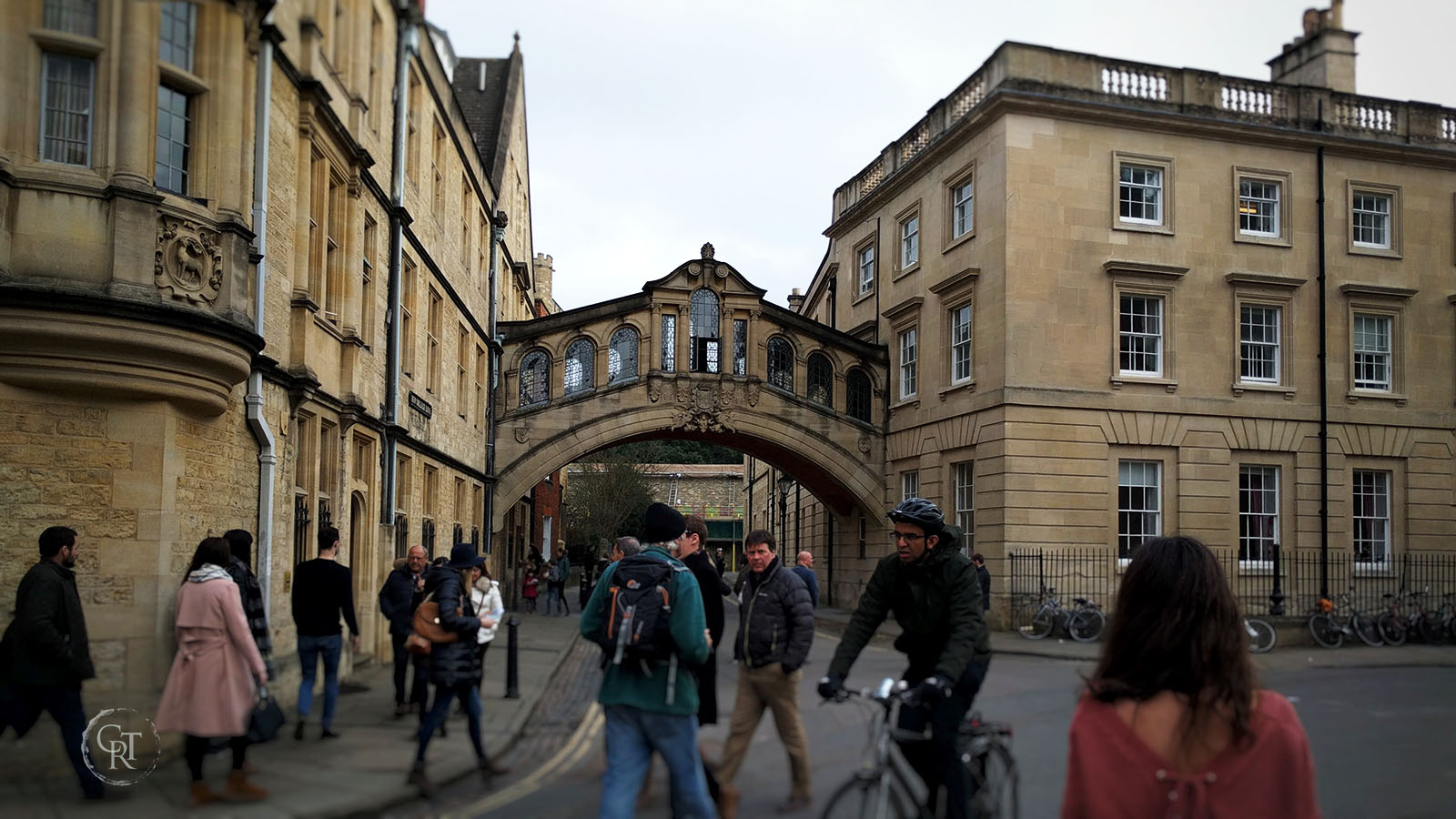
Other Bridges of Sighs are available…
Kitchen Bridge
Kitchen bridge, sometimes also referred to as Wren bridge is the second oldest surviving bridge over the river Cam.
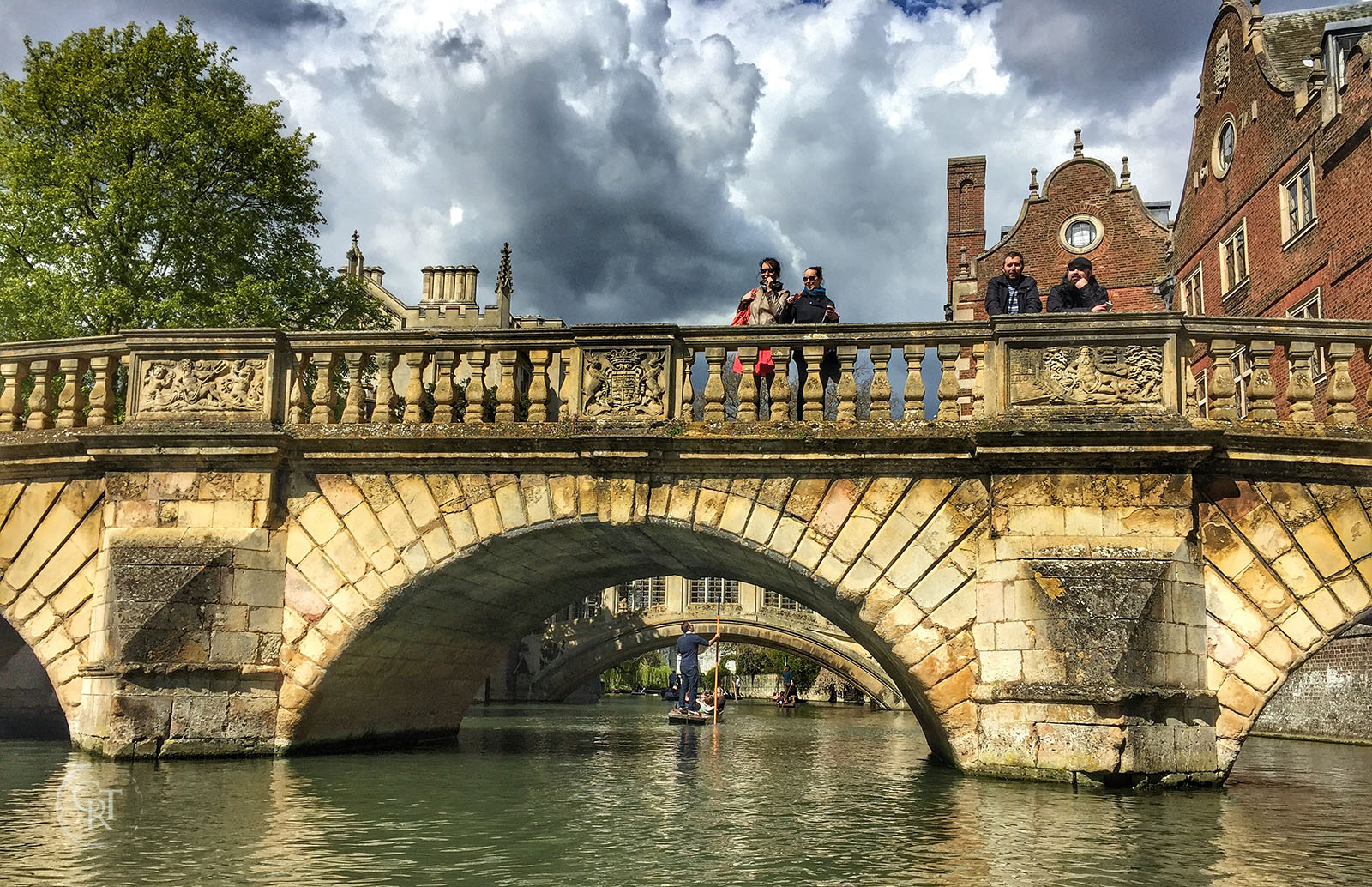
Imagine carving that bridge. No… imagine how they got it there in the first place??
The unusual name comes from the fact that, when the New Court building was completed in 1825 it included a dining hall but no kitchens. Food for the hungry students was still prepared in the old court kitchens and then transported across the bridge.
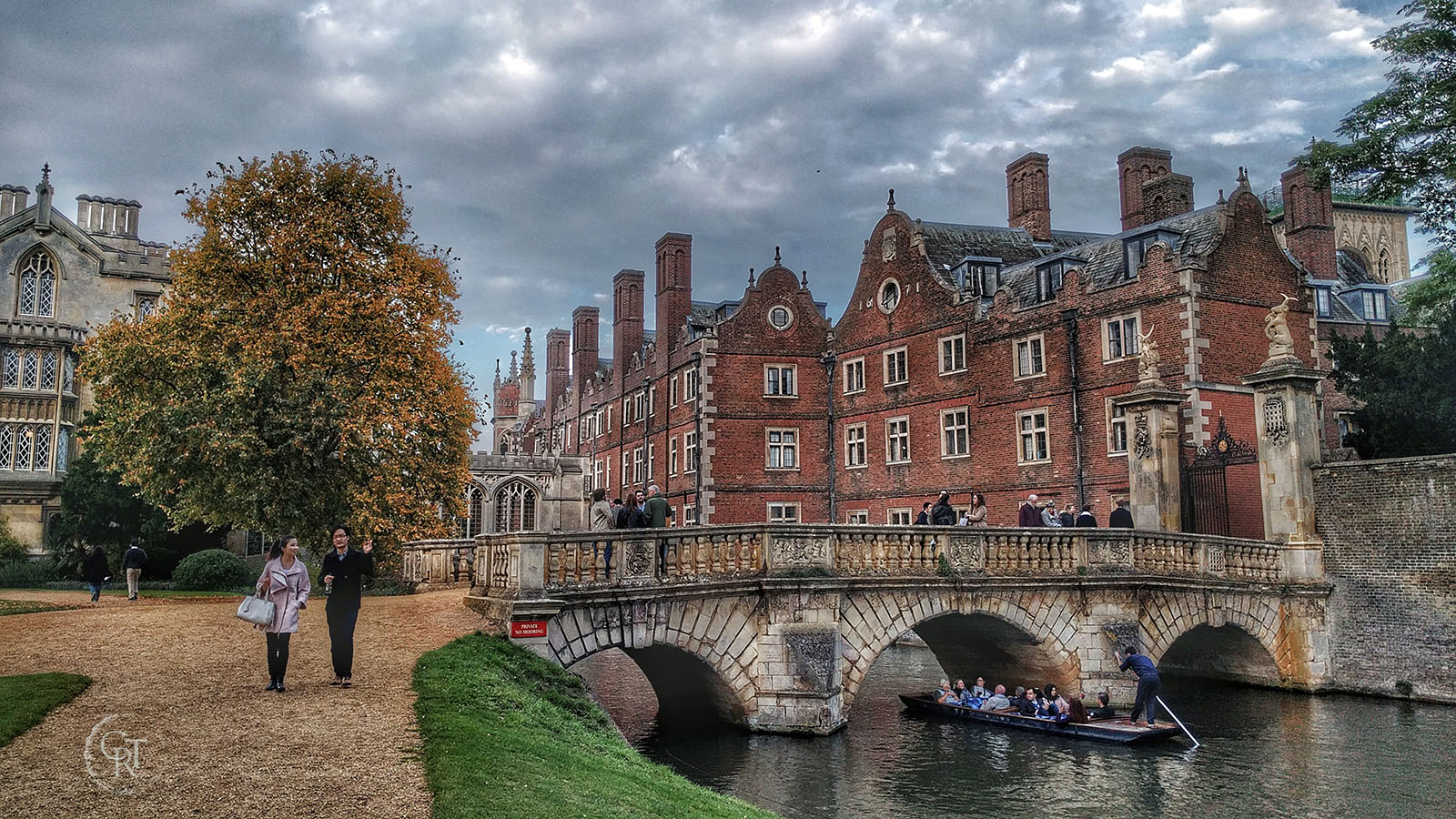
The food was often cold by the time it was served
- Stone construction, carved from a single block of limestone
- Designed by Sir Christopher Wren, built by Robert Grumbold between 1709 – 1711
- Second oldest bridge along the Backs
- One of two foot bridges at St John’s college
- Has high water markings from various Cambridge floods
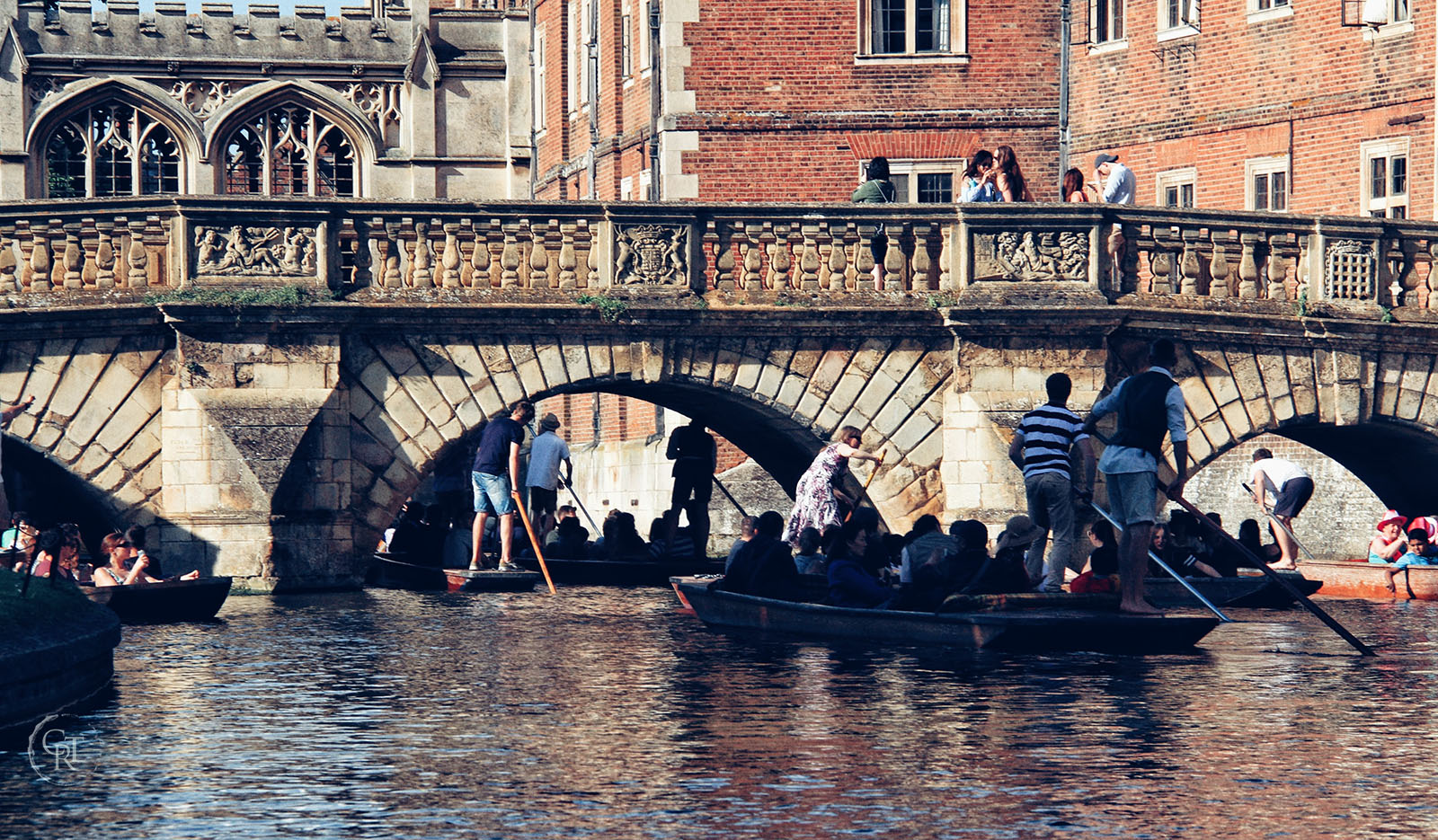
Busy on the river
Trinity Bridge
The current incarnation of Trinity bridge was built in 1765.

Spot the college porter… seriously though, why is this Grade I listed?
- Designed by James Essex, who was responsible for the design and construction of a number of Cambridge college buildings
- Stone built – Portland stone
- Road bridge
- First bridge to be rebuilt after the English Civil war (1651, not this version)
- Grade I listed
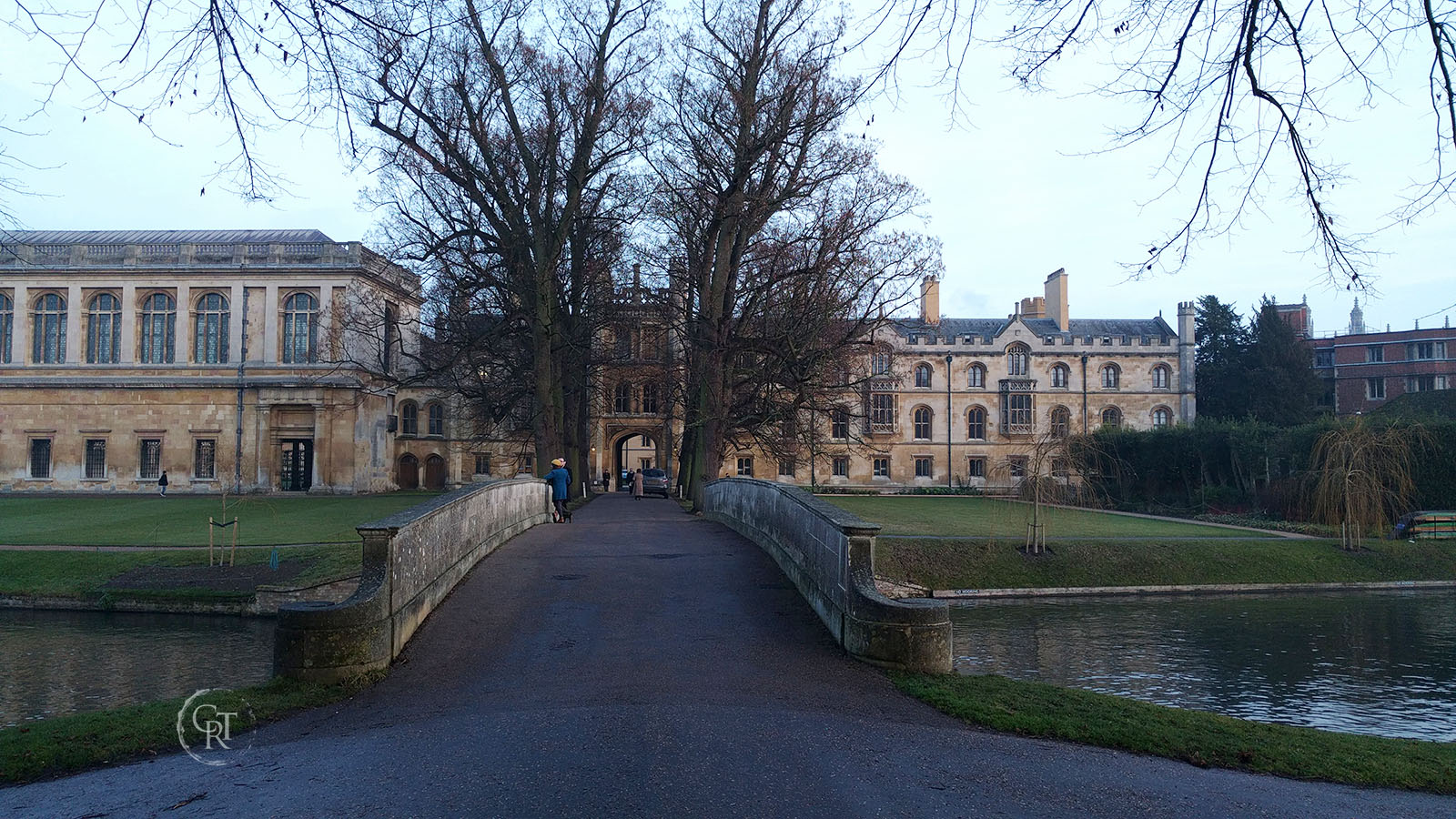
See, it really is a road bridge
It’s arguably the easiest bridge to ‘bridge jump*’ although the ever present college porters make timing all important if you are planning on engaging in this risky activity.
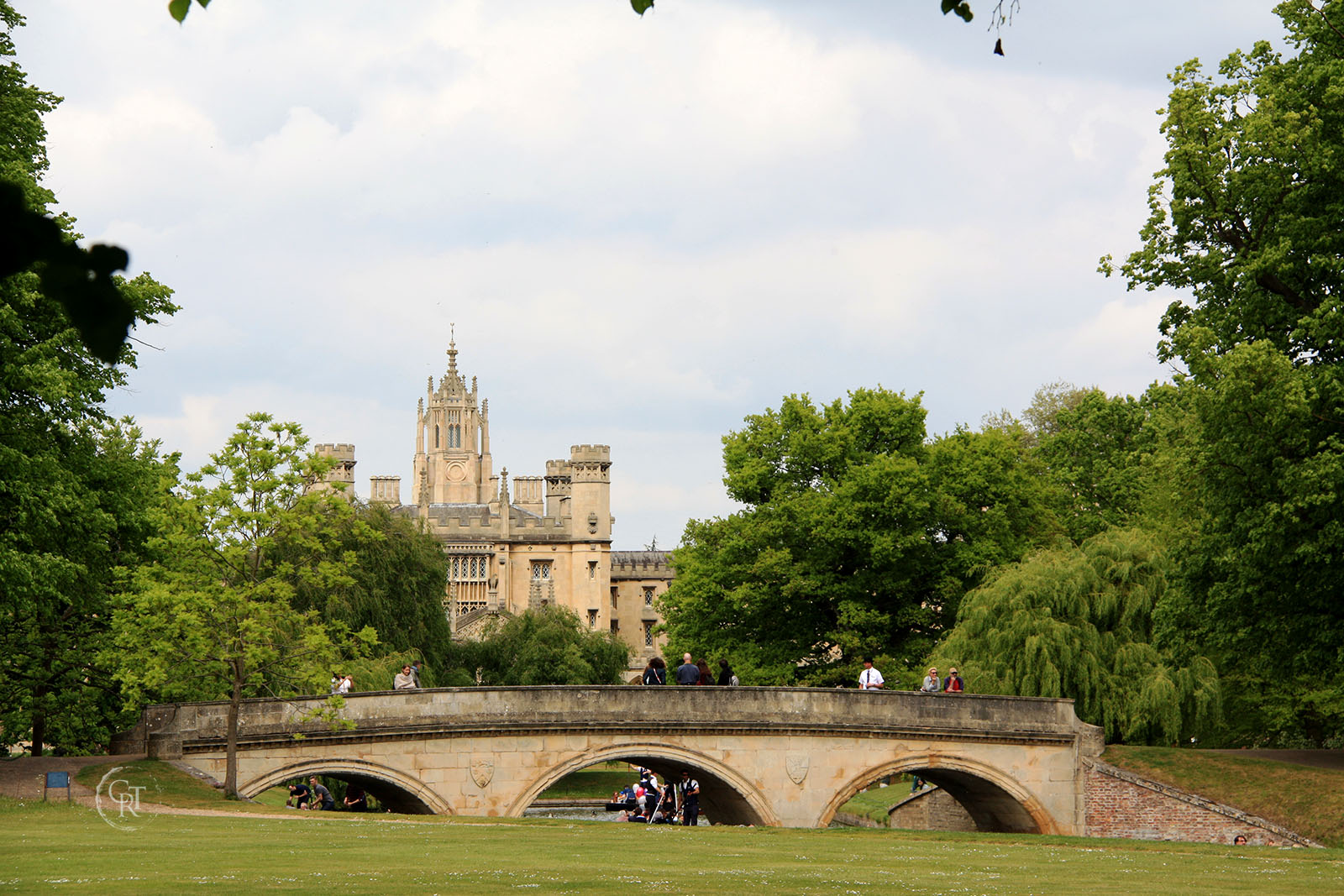
Oh hai Wedding cake! Oh yeah, also Trinity bridge. Spot the college porter?
Garrett Hostel Bridge
Garrett Hostel bridge is the newest bridge on the backs and also the only public right of way across the river between the two road bridges (Magdalene and Silver Street) at either end.
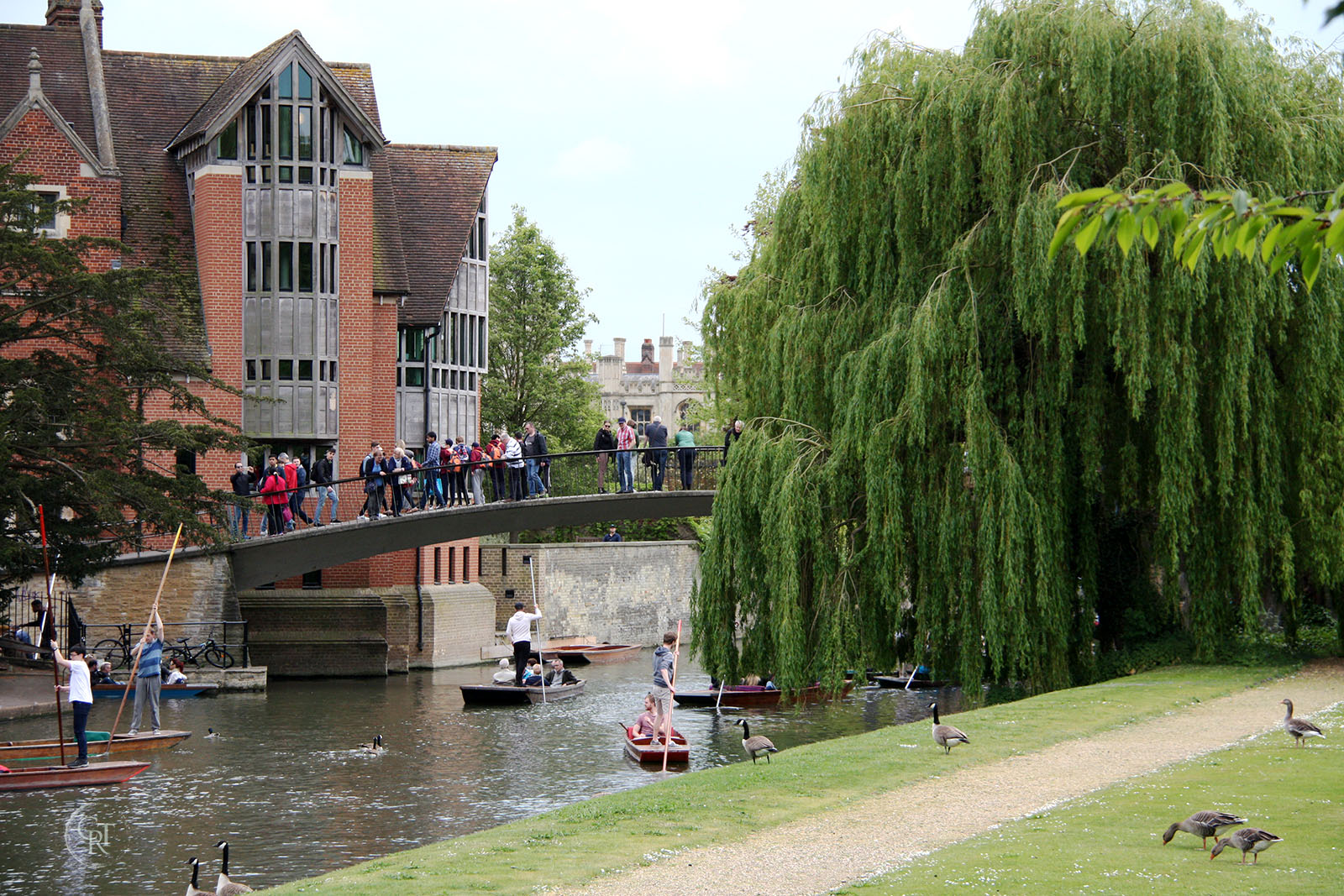
Garrett Hostel, complete with spectators
- Built in 1960
- Designed by Jesus college student Timothy Guy Morgan, who died before the bridge was completed
- Meant to look like the wings of a gull in flight
- One of the first post-tensioned concrete bridges built in the UK
- The original site of the Mathematical bridge
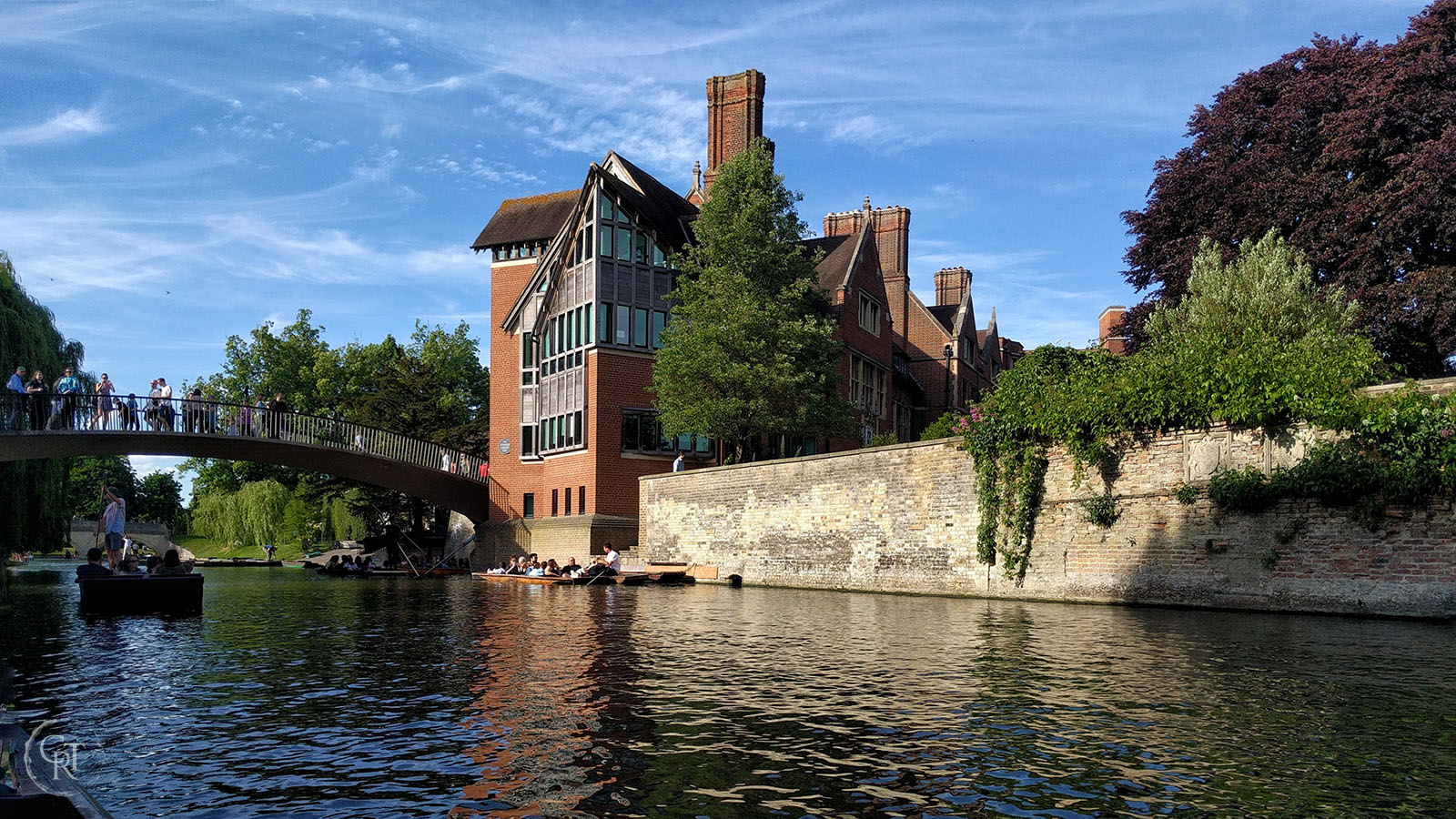
The bridge is not only a busy thoroughfare for both pedestrians and bikes travelling between various parts of the university but also a popular spot for spectators and tourists to watch the action on the river Cam, or just to admire the scenery. The result of this convergence of people can often be gridlock, especially during the summer months.
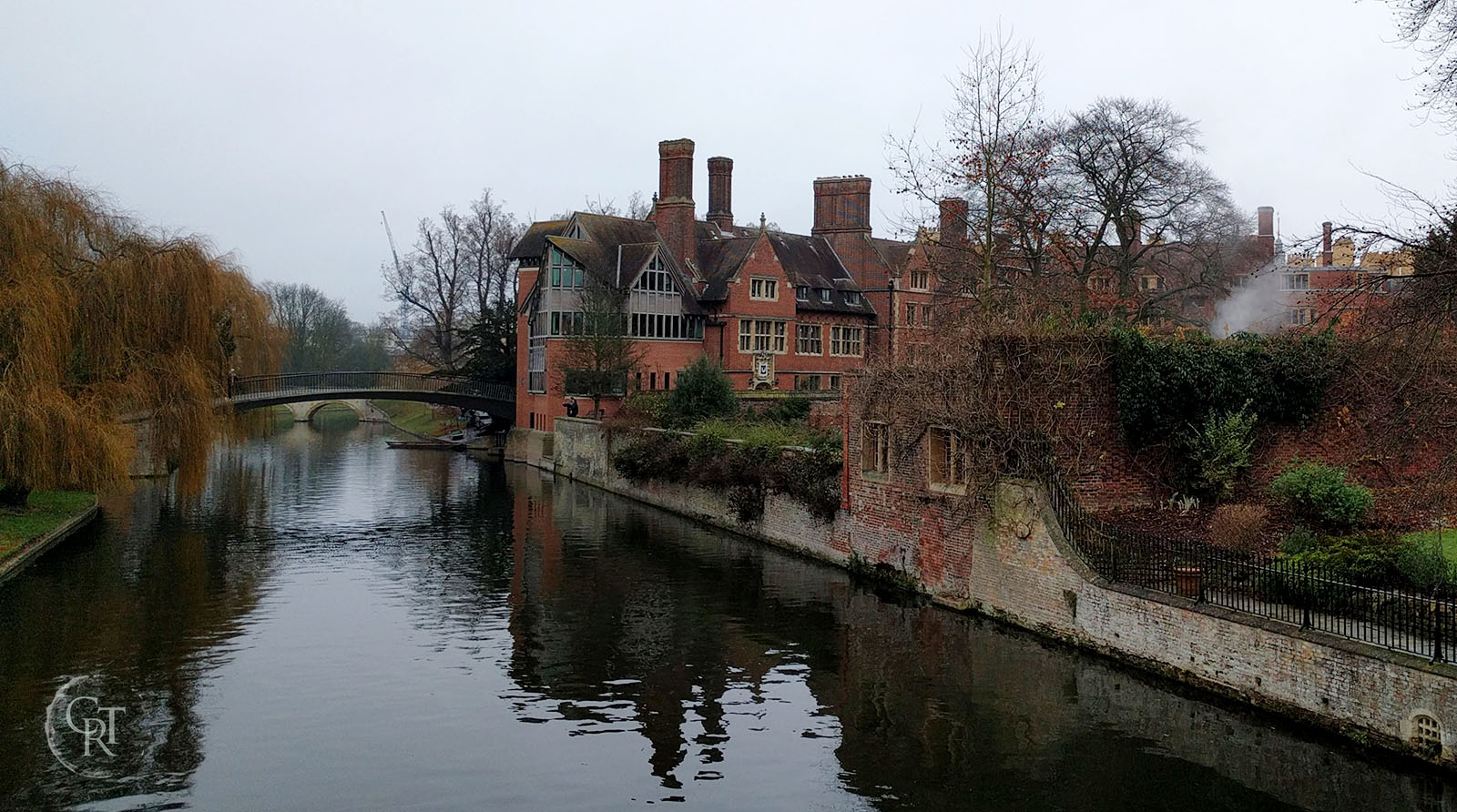
Not summer, no gridlock
Clare Bridge
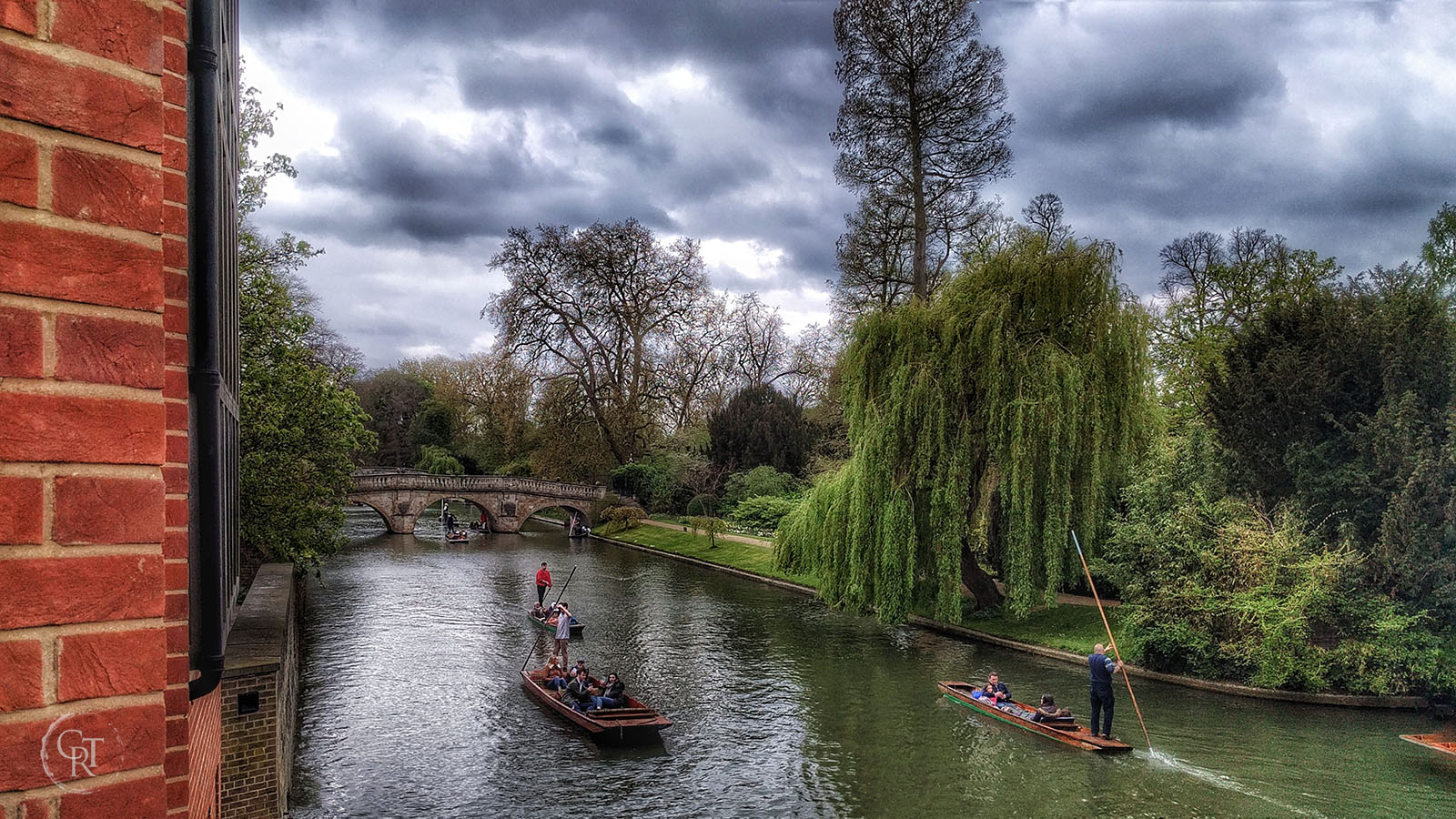
The best thing about Garrett Hostel bridge is the view when you’re on it
Clare bridge is the oldest bridge on the river Cam and the only surviving pre-civil war bridge. Many of the other bridges were torn down by Cromwell’s troops and the stone used to re-fortify Cambridge castle. At the time, Clare bridge was the most recently built bridge over the river Cam.
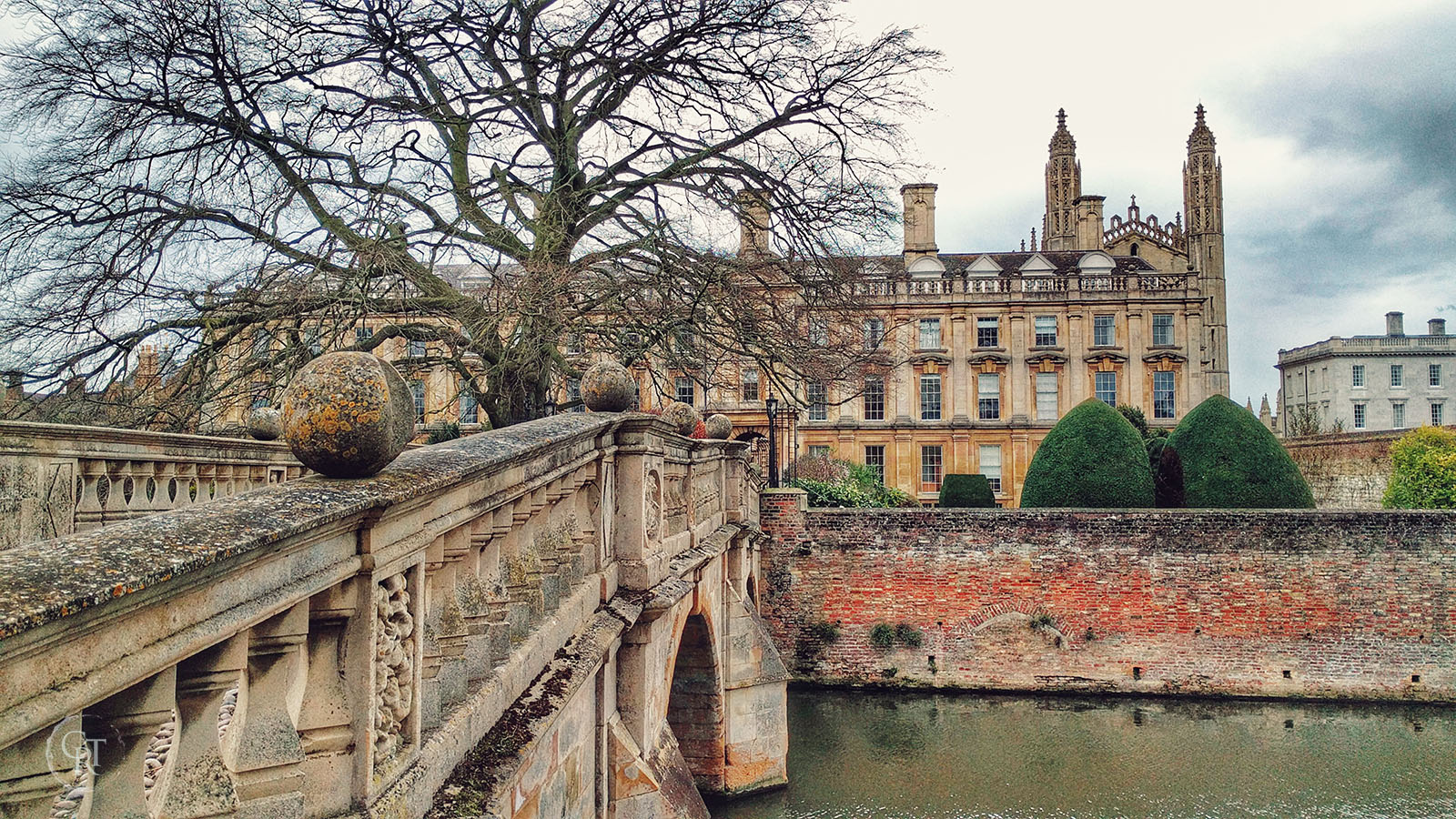
Spot what’s missing?
It is part of the oldest college on the Backs – Clare college.
- Stone built
- Built between 1639 – 1640 by Thomas Grumbold, restored in 1969
- Said to be incomplete – there is a wedge missing from one of the stone balls that decorate the bridge (there are a number of stories about why that happened).
- Grade I listed
- Until recently, a popular spot for spectators to watch the action on the river and admire the scenery
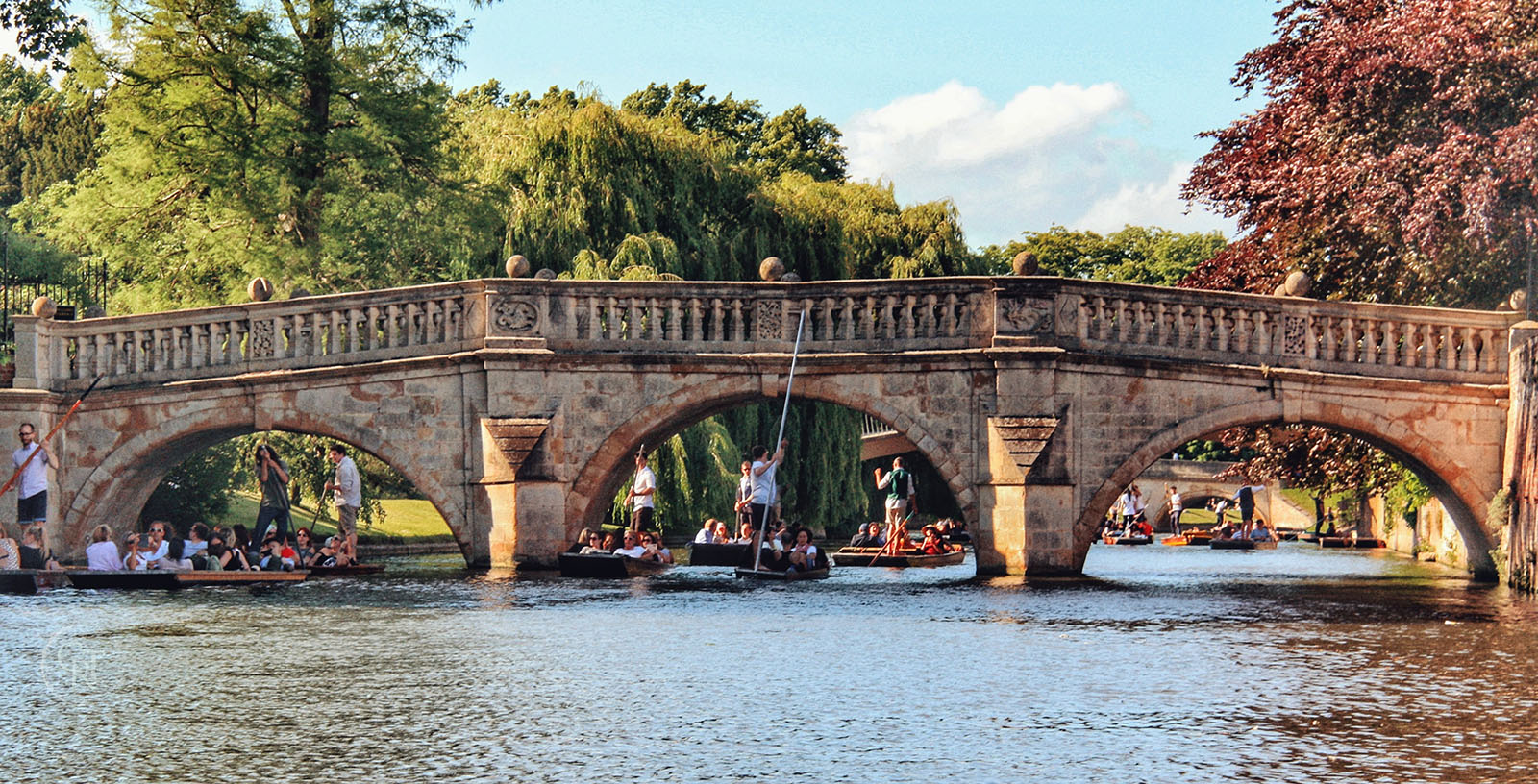
An empty Clare bridge during the summer
King’s Bridge
In contrast to the college itself, especially the world famous chapel, King’s bridge is somewhat unremarkable. The site of the bridge was once to the west of the Gibbs building, in the meadow where the cows now graze.
The original footings of that bridge can be seen as two mounds in the field, with trees growing from them:
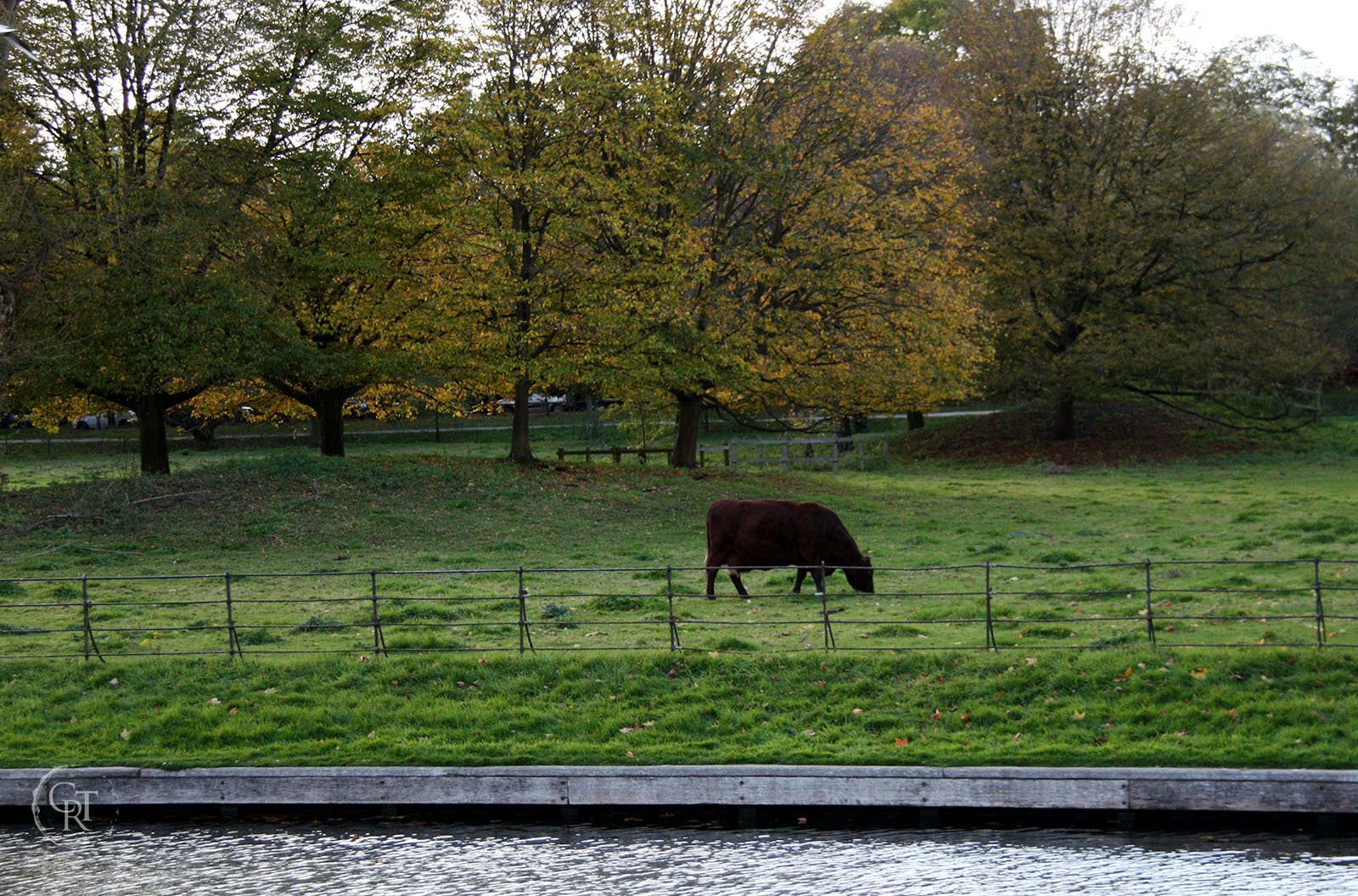
Hello cow
We’ve heard tell that this bridge was one of the last places in England where duels could still legally be held. However, our research has yet to provide any corroboration for this, so it’s probably one of the more fictional stories in Cambridge folklore.
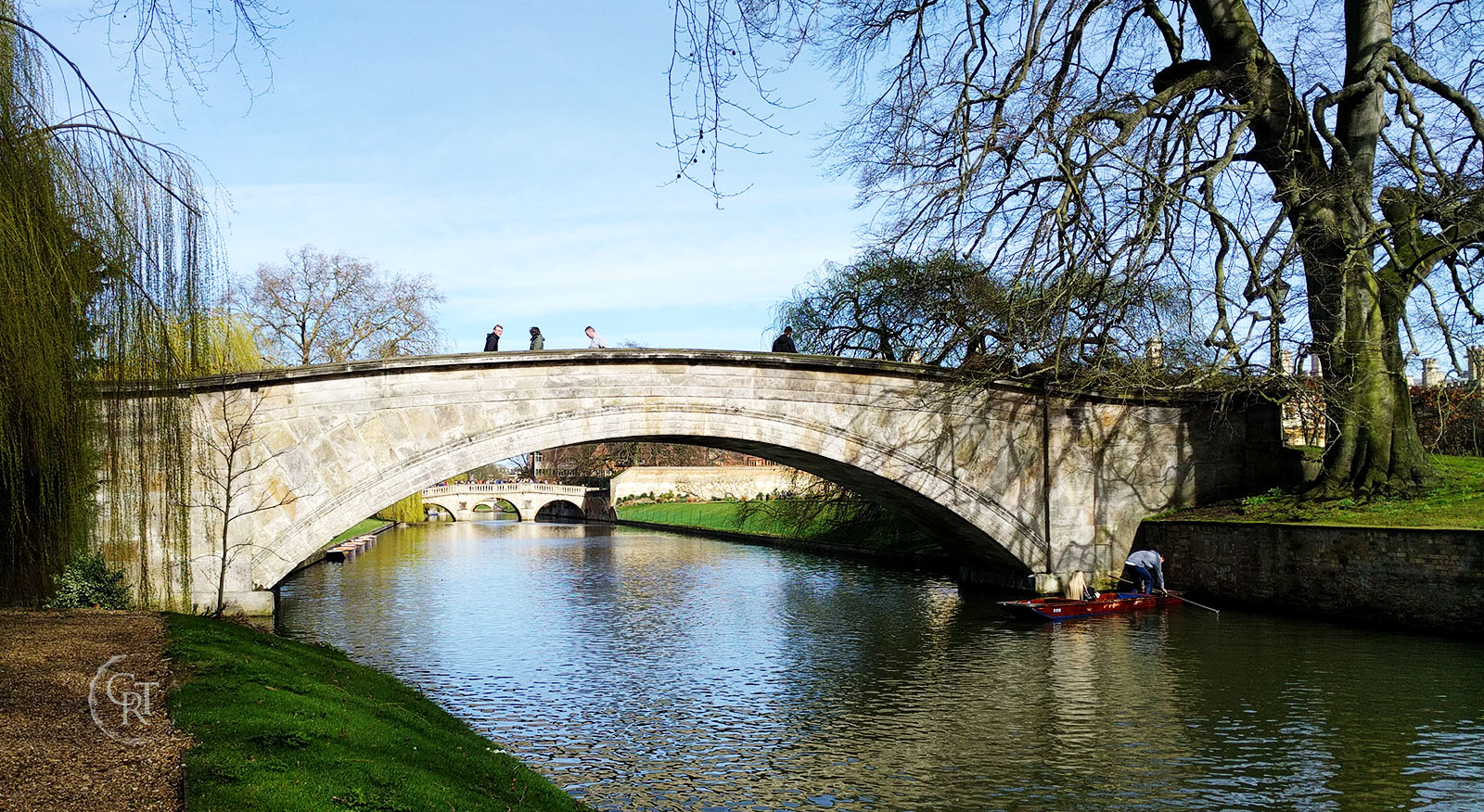
- Stone built
- Built in 1819, designed by William Wilkins, built by Francis Braidwood
- Not very exciting (please, if you have any interesting facts about this bridge, do let us know)
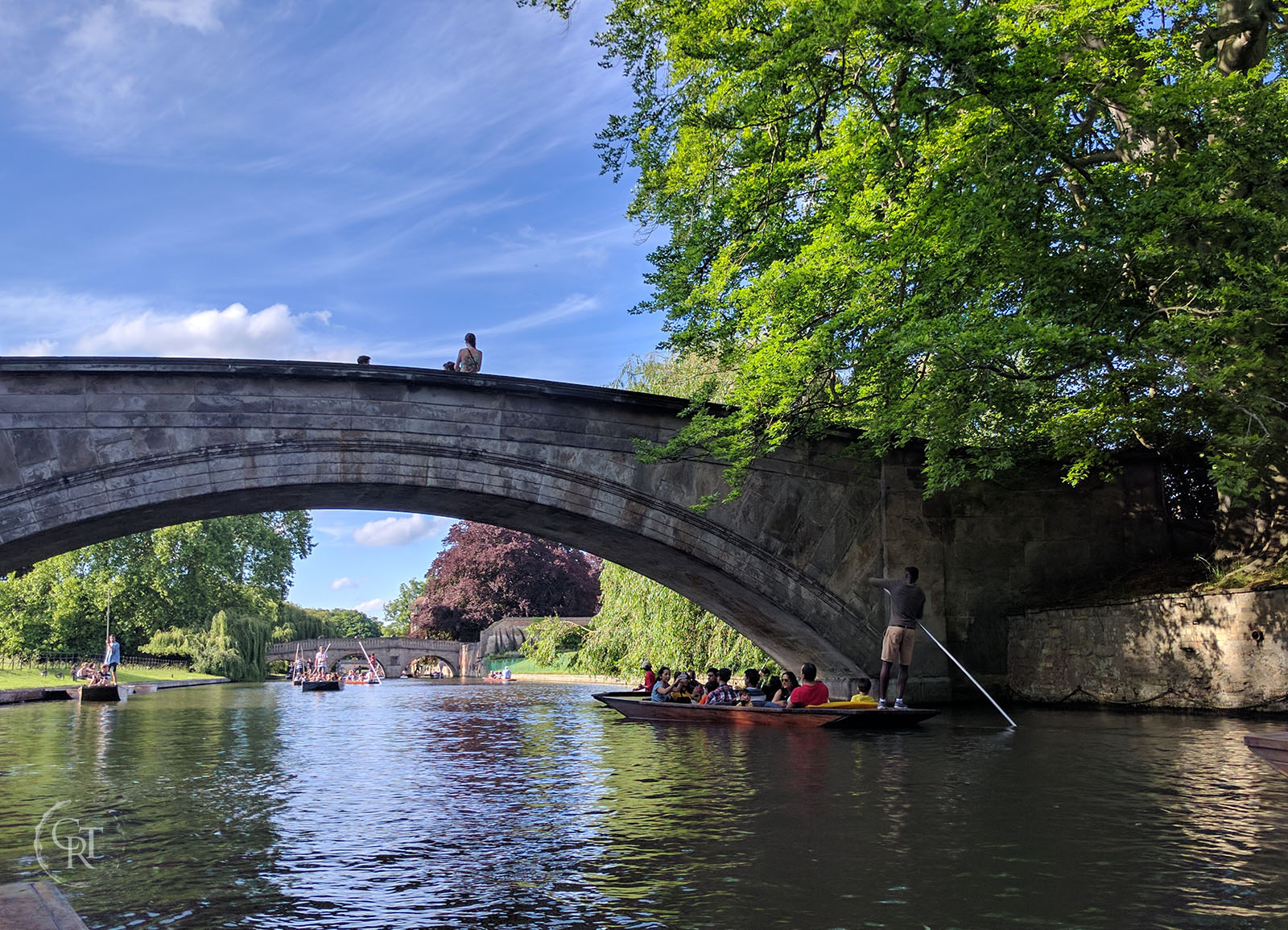
This is about as exciting as it gets
Mathematical Bridge
Queens’ Bridge, aka the wooden bridge or more famously known as the Mathematical bridge is the only wooden bridge left along the Backs (sorry Darwin, we’re not counting yours).
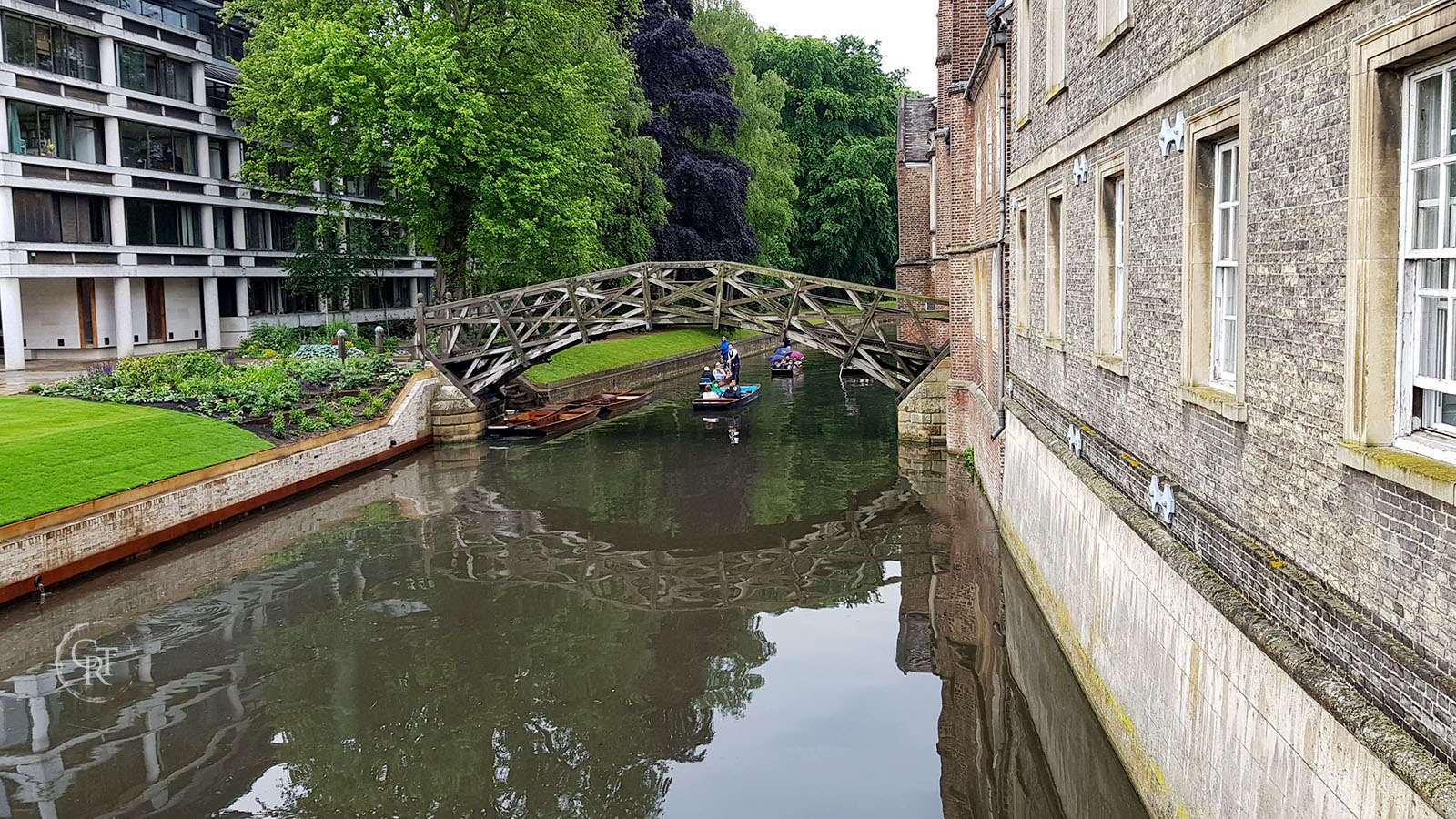
Not long after a heavy rain storm left the river quite quiet
This is Cambridge’s other very famous bridge, alongside the Bridge of Sighs. The legend goes along the lines of it having been built/designed by Sir Isaac Newton, etc, etc. However, that is not true.
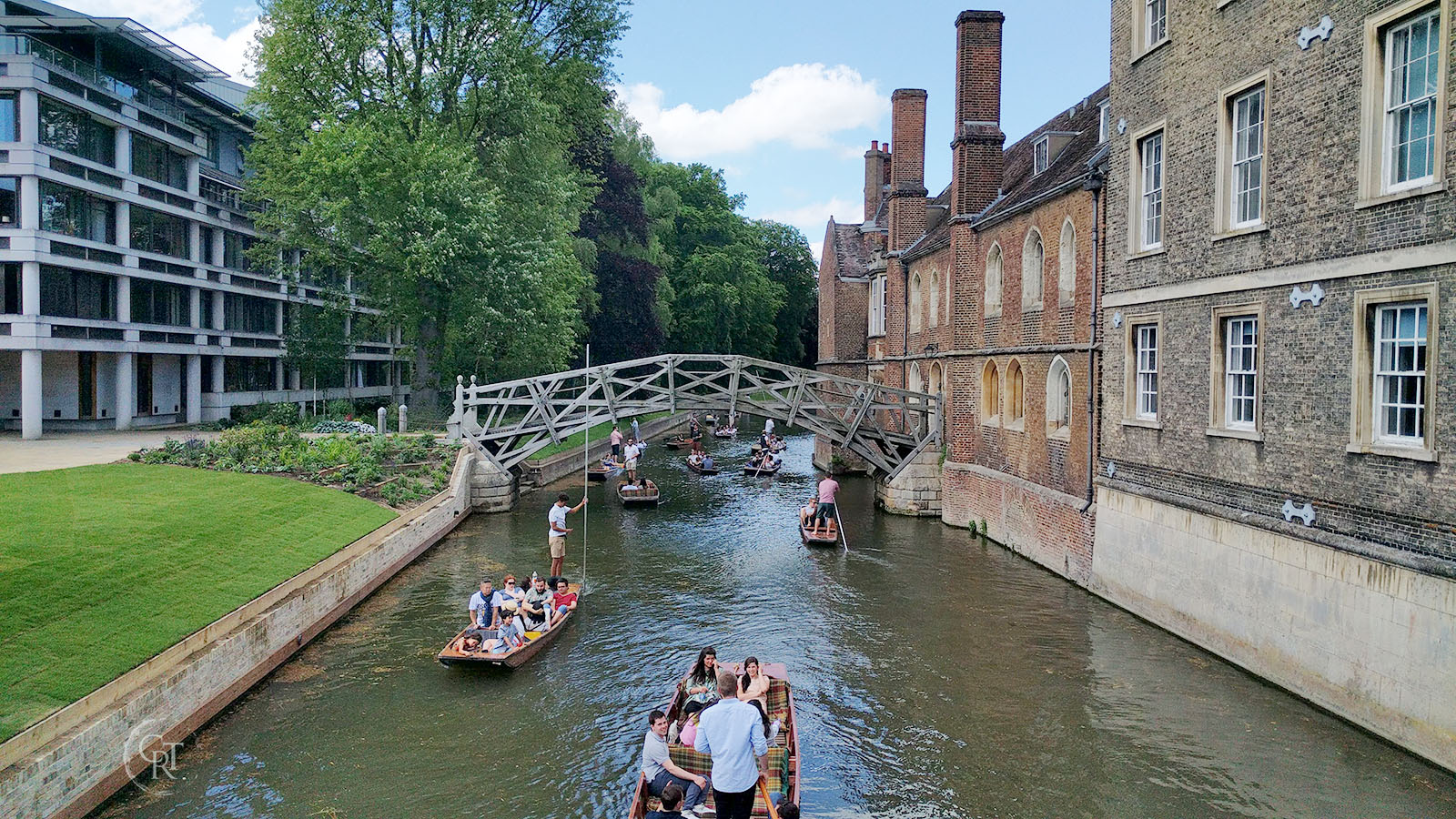
Mathematical bridge in the summer
- Current version built in 1902, first built in 1749
- Designed by William Etheridge, built by James Essex (yep, him again)
- Constructed so that it looks like an arch but it is built entirely from straight pieces of timber
- Grade II listed building
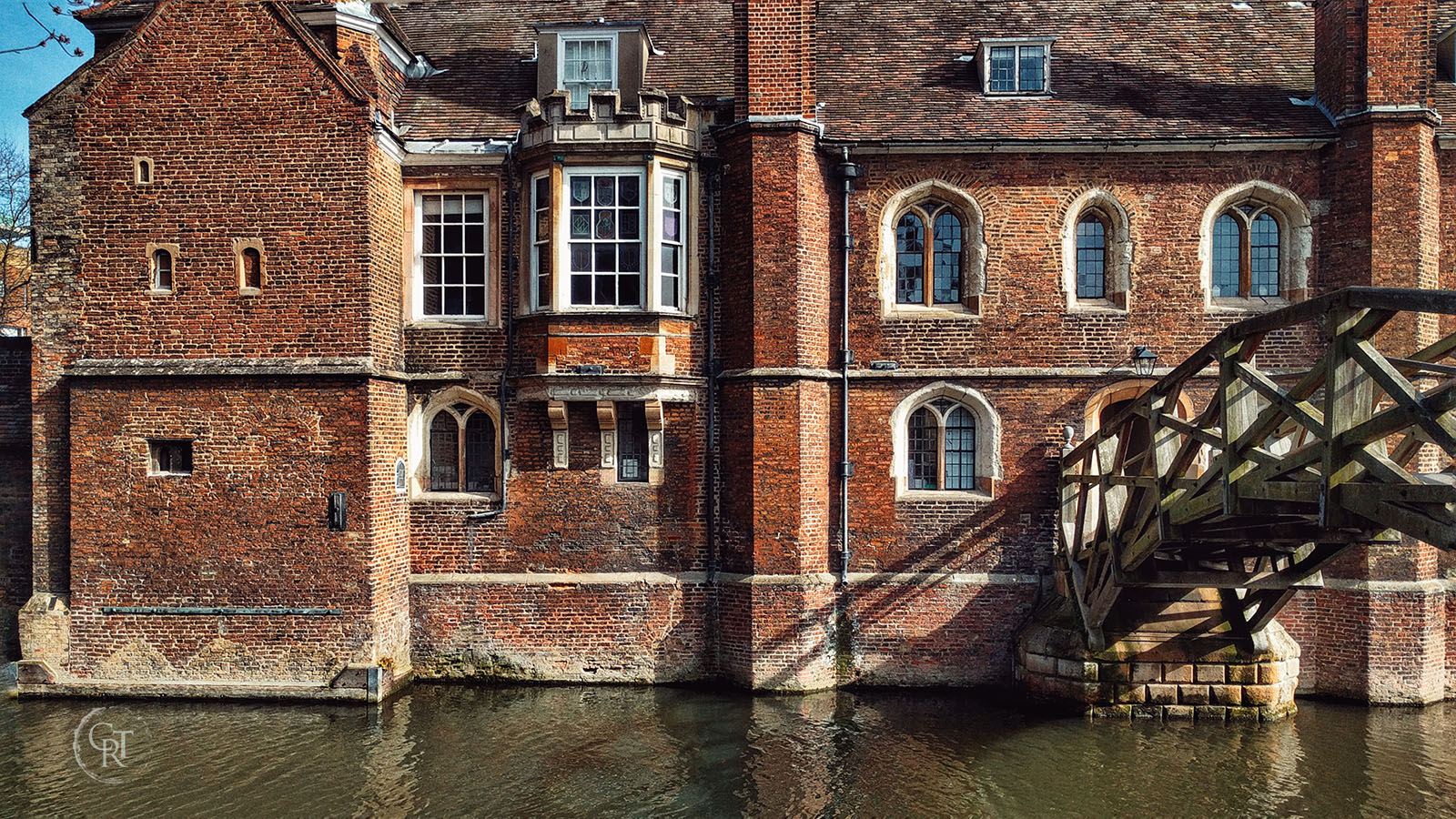
The old court at Queens’ college
Silver Street Bridge
Last up we have Silver Street bridge, which is our turning point at the other end of the backs. Another road bridge, as with Magdalene bridge at the northern end of the backs. There has been a bridge on this site since the 14th century, although the current one is more recent, dating from 1959
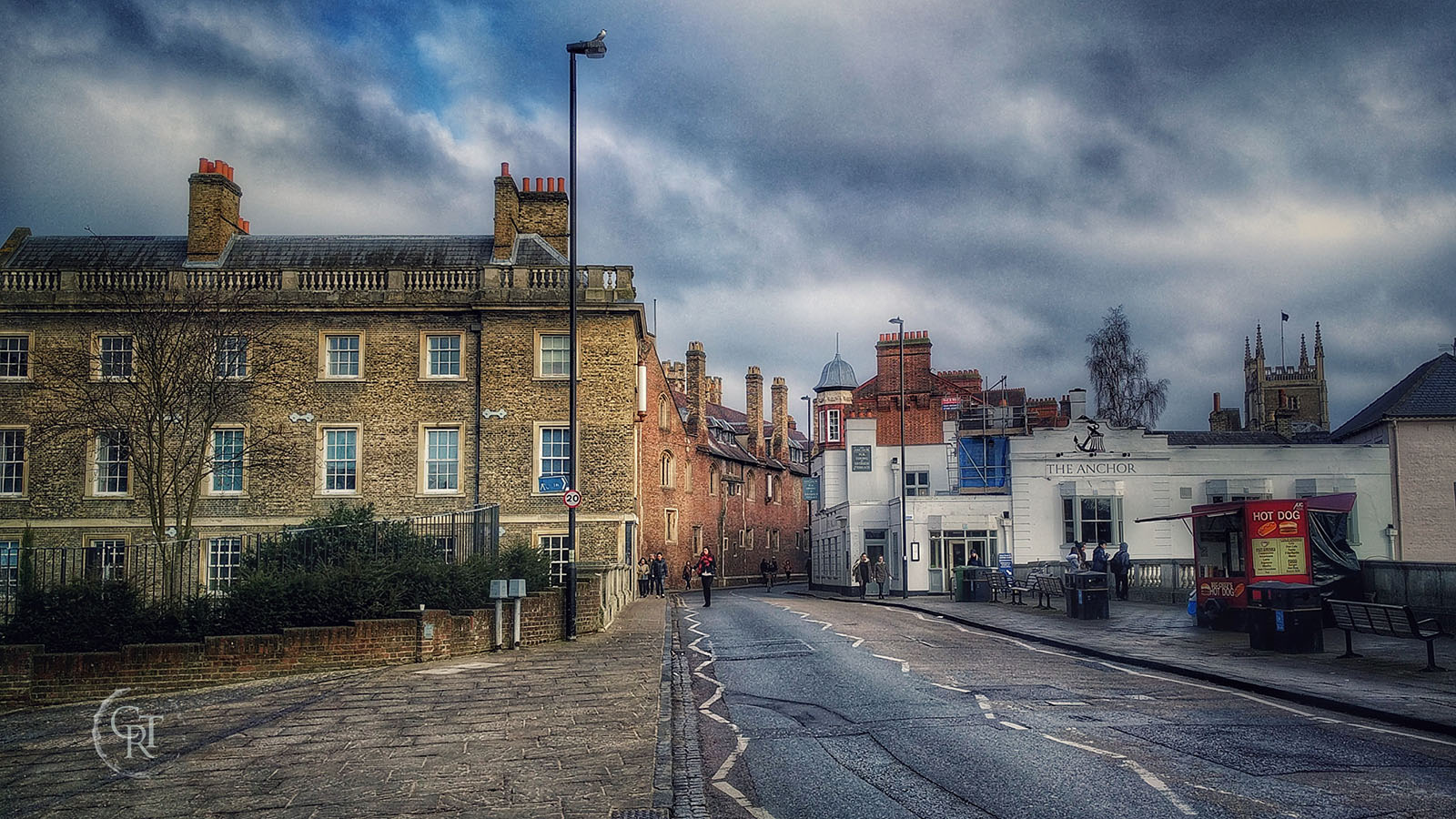
- Road bridge
- Designed by Sir Edwin Lutyens who also designed Benson court at Magdalene college (amongst his many other works)
- the origins of the name are possibly from silver being traded here many centuries ago
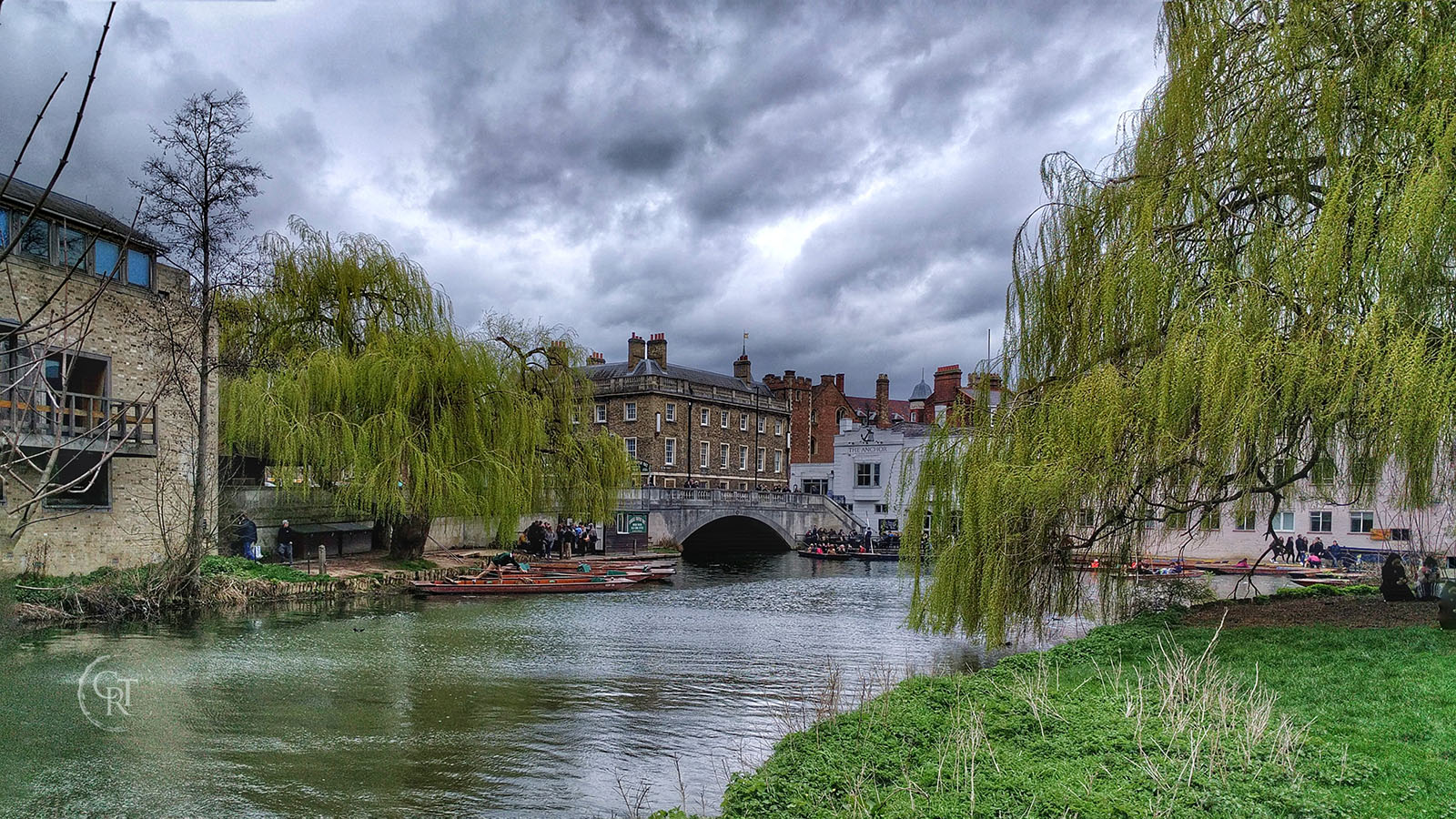
You can just about see Silver Street bridge in the background…
*Bridge Jumping
We made reference to bridge jumping earlier in this article. For the uninitiated, this sounds like something completely different to what it actually is.
Bridge jumping, or bridge hopping as it’s also known, at least in Cambridge parlance, is the ‘sport’ (if you can call it that) of climbing from a punt, onto a bridge, over the bridge and back into the punt on the other side, as demonstrated in this video here (don’t try this at home folks – unless your home happens to be on a river)
He made it look easy right? Now imagine trying that on all nine of the bridges featured here, on a single punt trip along the river. Please note, this is not something that we offer on our tours…
What next?
Now you’re armed with all of this knowledge, you probably want to see these bridges up close and in person. Find out what else you might need to know to get the best out of your punting experience. Then find yourself a place to stay near Cambridge University so you can enjoy your visit.
Or, for an entirely different perspective on Cambridge, check out our blog post on Cambridge during lockdown, with loads of photos of the city looking eerily quiet. Alternatively, read about how we started the business and got our name.


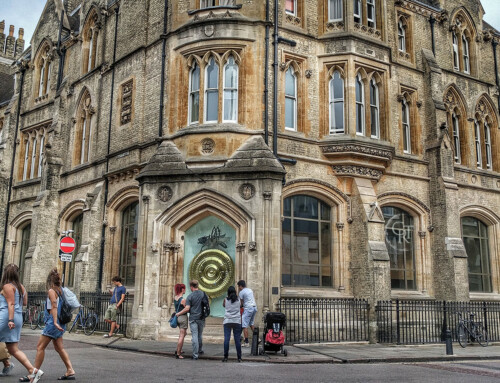
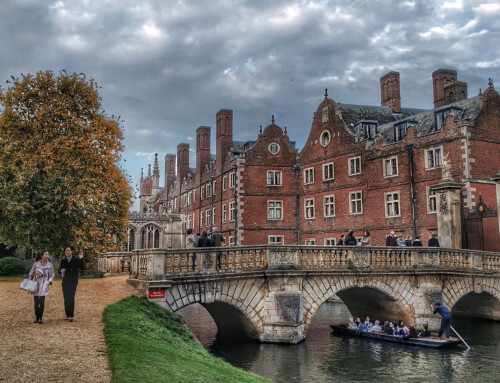
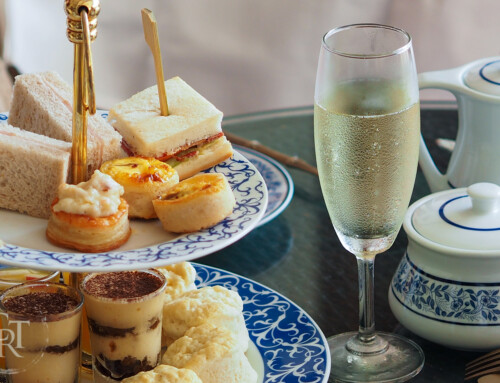
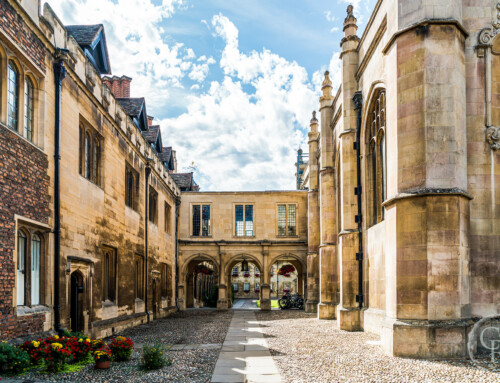
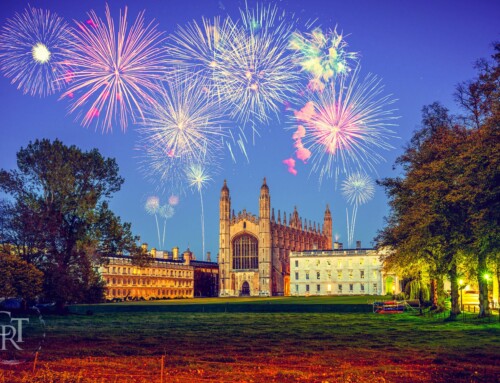
Leave A Comment